
Aston Martin. It’s as British as Beckham, cups of tea and rocky beaches packed with pink-bellied Poms with handkerchieves on their heads.
While it would be insulting to suggest that a Vantage N24 needs any help to look cooler, a Japanese ‘slash’ number plate and a camo-wrapped carbon fiber body kit doesn’t go amiss. The car in question belongs to Mr. Hiro Akane, head honcho at ACR Performance in Tokyo.
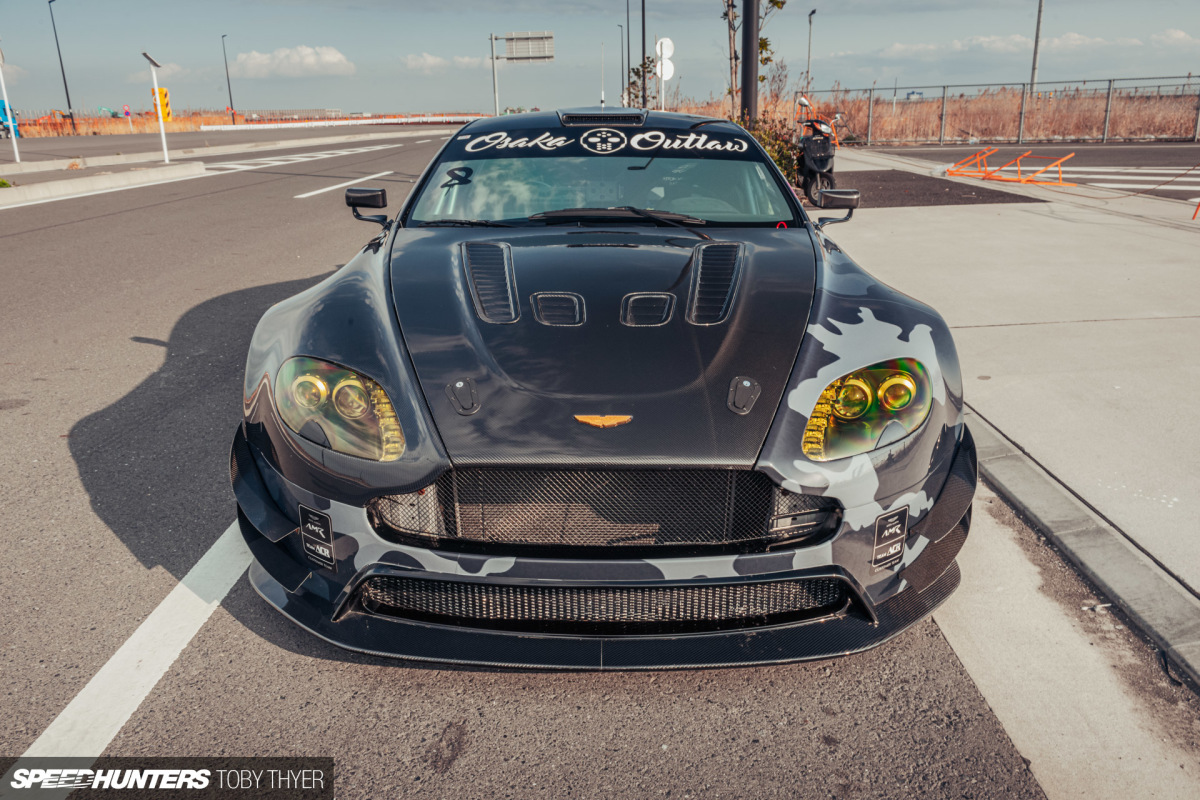

ACR produce a range of original carbon fiber body parts and other parts for Aston Martins, including supercharger kits, badges and wheels. This Vantage N24 is the company’s demo machine. Hiro-san tells me he has a few other import and export side hustles, and I expect they exist purely to feed his passion for racing these beautiful cars.

And that’s the thing with Aston Martins, they are undeniably beautiful. There’s a real elegance that drapes itself around the ballsy performance of their V8 and V12 engines. Why else would Bond choose to drive a DB5 over a Lotus Europa?

Beautiful design is an ethos engrained in Aston Martin’s history since the automaker’s founders, Lionel Martin and Robert Bamford, began building cars by hand back in 1913.
For all those who are mathematically illiterate like me, that’s well over 100 years ago. Considering the limit of technology and design reference points at the time, I dare say these two British chaps were looking to Bugatti and the like for inspiration.
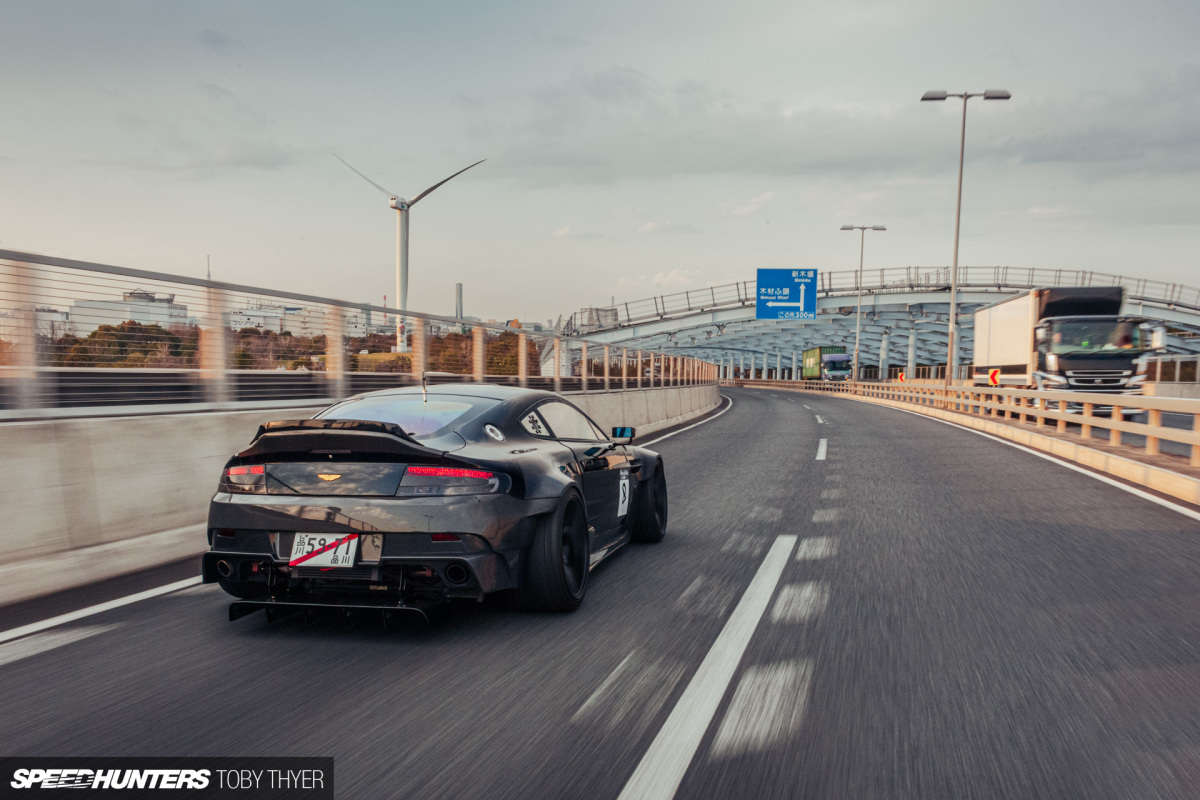
Fast forward to 1932, and Aston Martin’s foray into the world of GT and endurance racing took off when they won the ultimate race of all races – Le Mans. With the introduction of the first DB model in 1947, dominating on the race track became a priority for Aston Martin’s then CEO, David Brown. In the late-1950s, DB models took outright wins at Le Mans and no less than six other world championship races, all whilst setting five new lap records.
Of course, James Bond wasn’t the first to make Aston Martin world famous, because in 1959 another British legend drove a DBR1 works car to victory at Le Mans. That man was none other than the late, great Sir Stirling Moss.

After all this success, Aston Martin took a hiatus from the race track. That lasted for over 40 years, until their return – and victory – with the DBR9 and later the V8 Vantage GTE.
I can’t say I’m a huge fan of GT racing. When looking at any of the powerful luxury cruisers that make up the ranks, I find myself thinking, either you’re a race car or not. I know, I shouldn’t view life in such a narrow-minded way, after all, there are plenty of road cars that give their drivers great enjoyment and achieve much success on the racetrack.
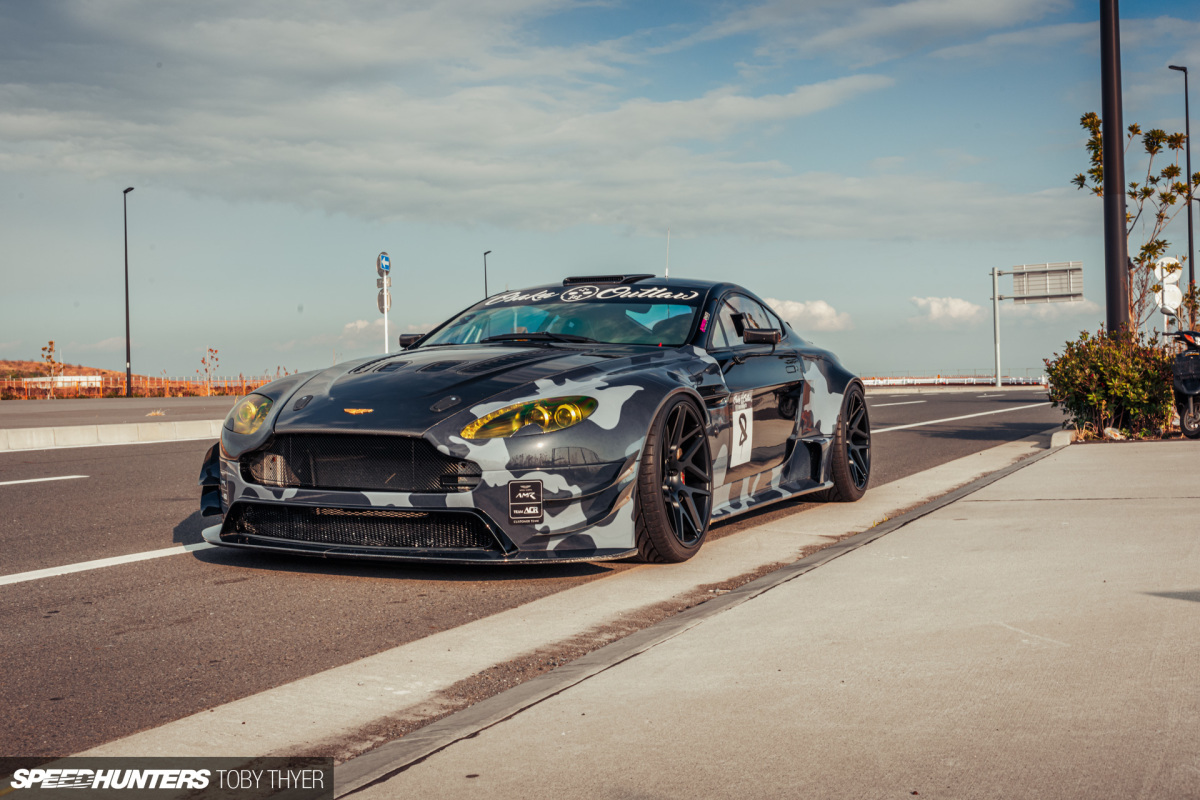
Hiro-san’s Vantage N24 is very much a road car built for the racetrack. In fact, straight from the factory these N24 versions are eligible to enter FIA European GT4 and FIA GT4 World Endurance Championship races. During the Vantage N24’s development, the model was tested for over a million miles, including through Dubai’s deserts and the arctic regions of Sweden.


Hiro-san’s Aston Martin obsession began while he was working at a used car dealership in his 20s. In his 30s, he jumped behind the wheel of an Aston and found something special which, compared to the Ferraris and Porsches of the time, truly captured Hiro-san’s attention. His first car was a 1970s Aston Martin V8, which he modified and ran at circuits including Tsukuba and Fuji Speedway.
Since then, Hiro-san has taken a number of podium finishes in various Aston Martins across Japan. In 2013, he was invited to compete in the automaker’s 100th Anniversary Race (Centenary Race) at Brands Hatch Circuit in the UK, in doing so becoming Aston Martin’s first Japanese customer team.


In 2015, Hiro-san teamed up with British driver Andrew Jarman to compete at Le Mans, taking third place in class. That must have been a dream come true, not only to compete in your dream car, but also to compete at the birthplace of Aston Martin’s racing heritage.


Looking at the N24, it’s pretty amazing just how much of this road-legal race car is factory equipment from Aston Martin. Giving the public and privateer race teams a chance to compete – or just enjoy these cars – is obviously an integral part of the Aston Martin universe. Whether GT cars are your cup of tea or not, having a platform like the N24 available is in itself, brilliant. Plus, they cost around the same as a standard road car.
But, as with any long term relationship, it’s only natural to want to spice things up a little…
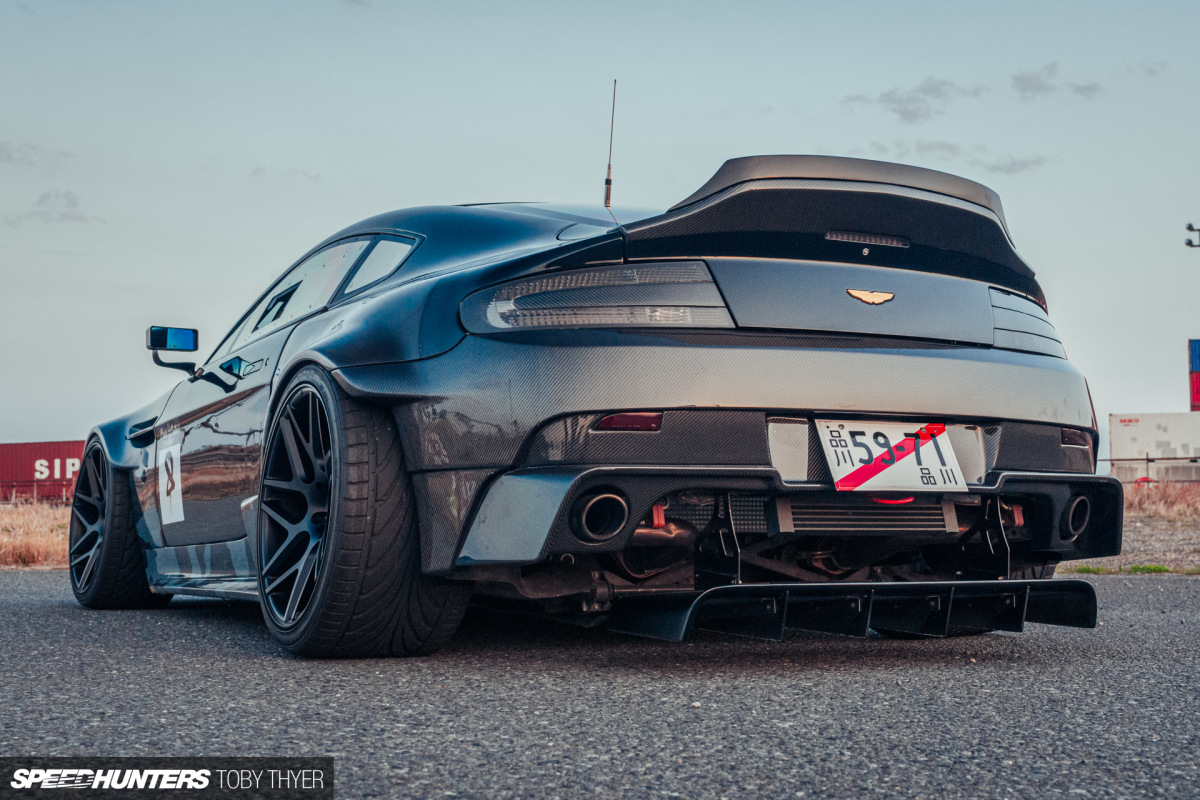
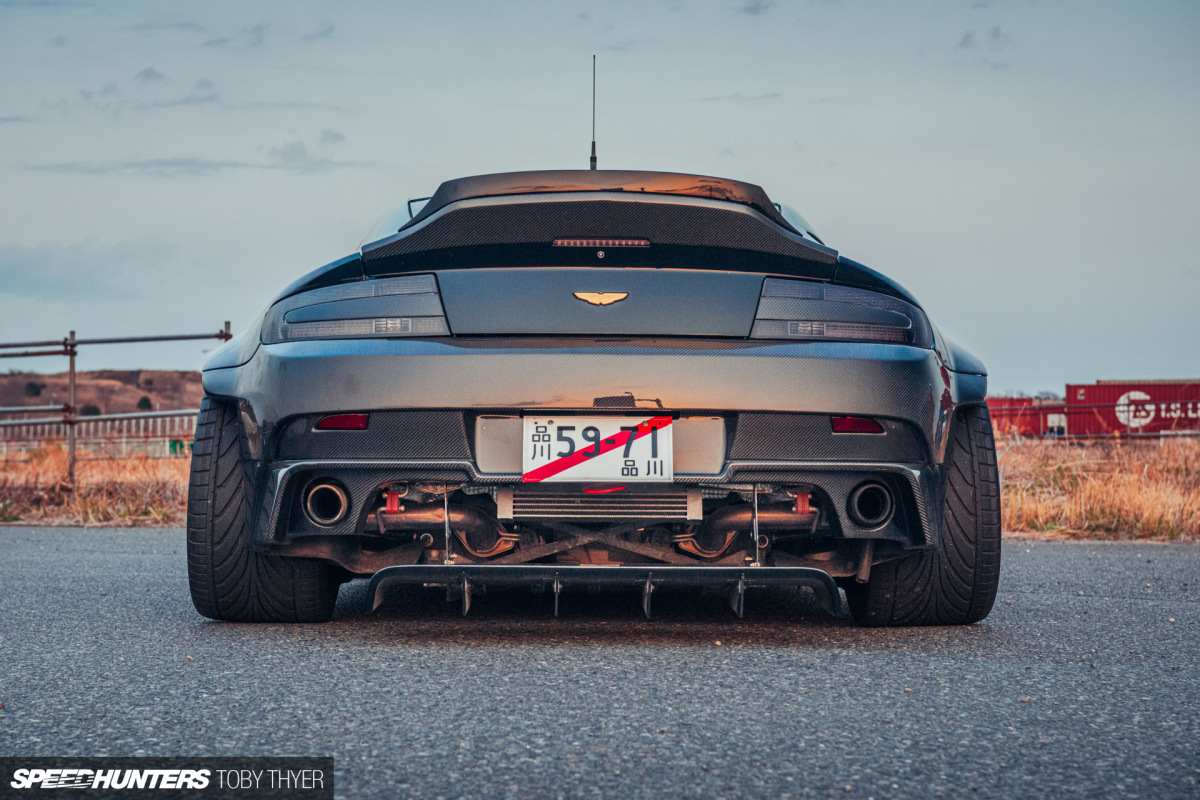
Not content with the N24’s already broad stance, Hiro-san designed a full forged carbon fiber body kit that adds an extra 100mm of width to this already portly British bulldog.
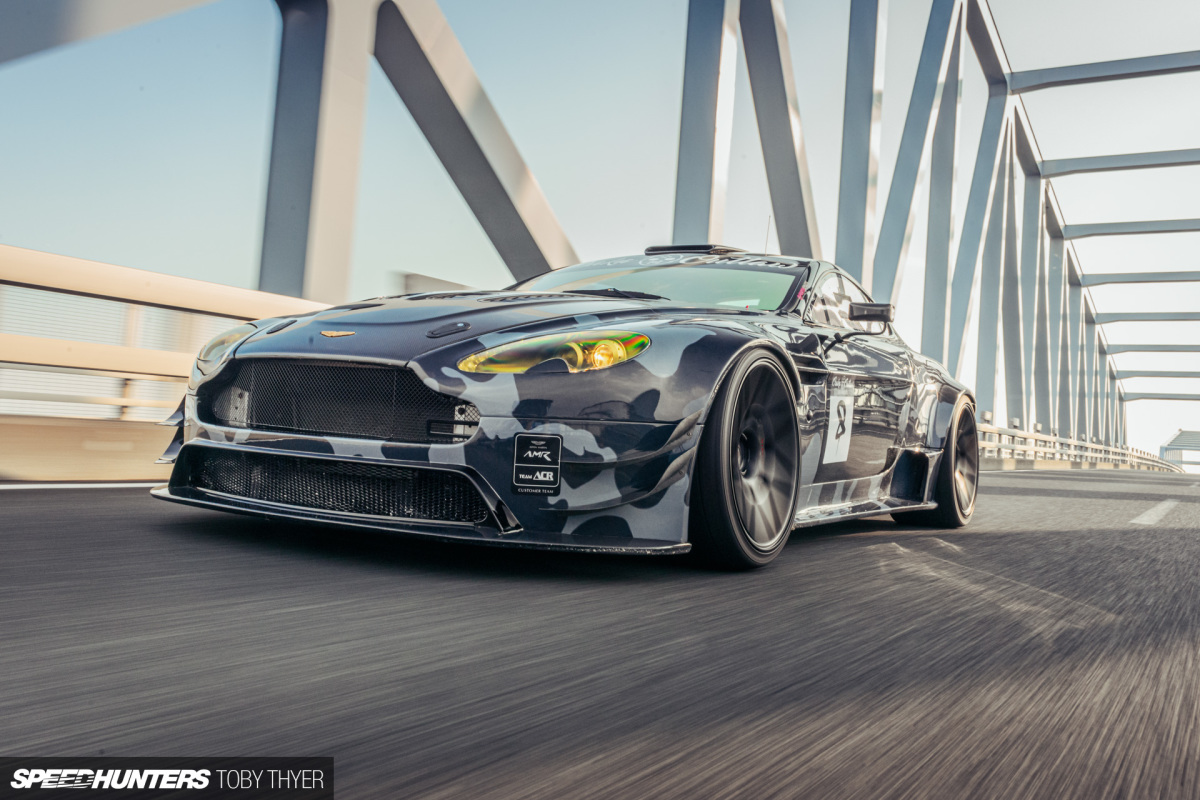
The full kit includes front and rear bumpers, side skirts, front and rear fenders, as well as canards, front splitter and the rear diffuser. The rear ducktail spoiler is a work in progress, and Hiro-san tells me the team at ACR is working hard to increase downforce with regular testing at Tsukuba.
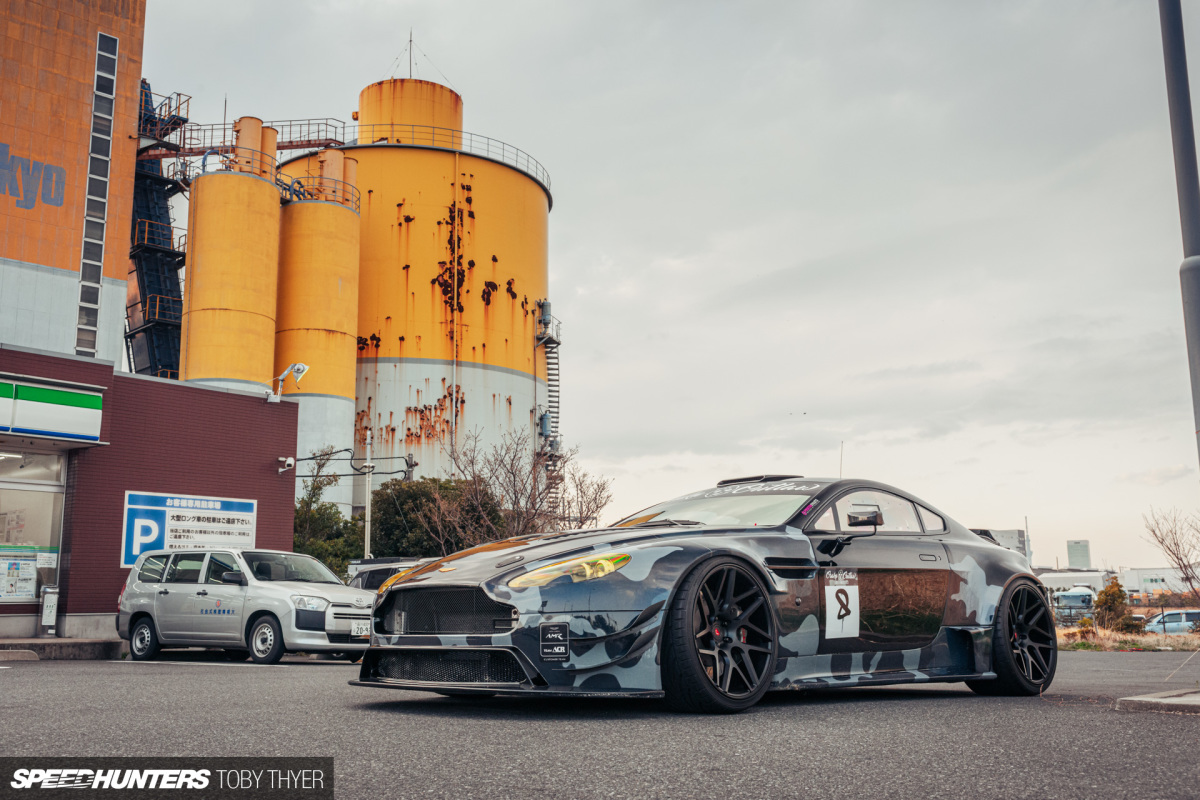
Some of you may unwillingly have already seen this body kit in action, especially if you’re partial to a bit of drift action. In 2019, a Dubai-based drift team used the ACR wide body kit for their Aston Martin, which as far as drift cars go was the first of its kind. Now there’s talk of developing a full body kit for a Pikes Peak International Hill Climb entry.

In road trim, Hiro-san’s N24 sits on a set of Vossen VPS-315T forged wheels, 20×11-inch up front and 20×12.5-inch in the rear. The car’s original FIA-approved 18×10-inch OZ Racing wheels are retained for track use.
Tracking the N24 from the open boot of Project GC8, I was treated to a full ensemble of exhaust notes, from the burbly rumble of the boxer to the throaty roar of the Aston’s V8.

Weaving through traffic around in one of Tokyo’s busiest port areas, the N24 both flew under the radar like a stealthy ninja and stood out like a race car that had taken a wrong turn at Tsukuba.

As the afternoon progressed, we headed to a nearby Aeon shopping center so I could take a closer look at the N24. It took a while for Hiro-san to manoeuvre the low-slung Aston over speed humps and onto up ramps to the fifth level, but he made it without a scratch or scrape.

This is where the ‘race car for the road’ moniker really hits you. Remember I was saying that you can be both a luxurious grand tourer and a race car? Well, it appears that Aston Martin know exactly what side of the track they’re on with the N24.
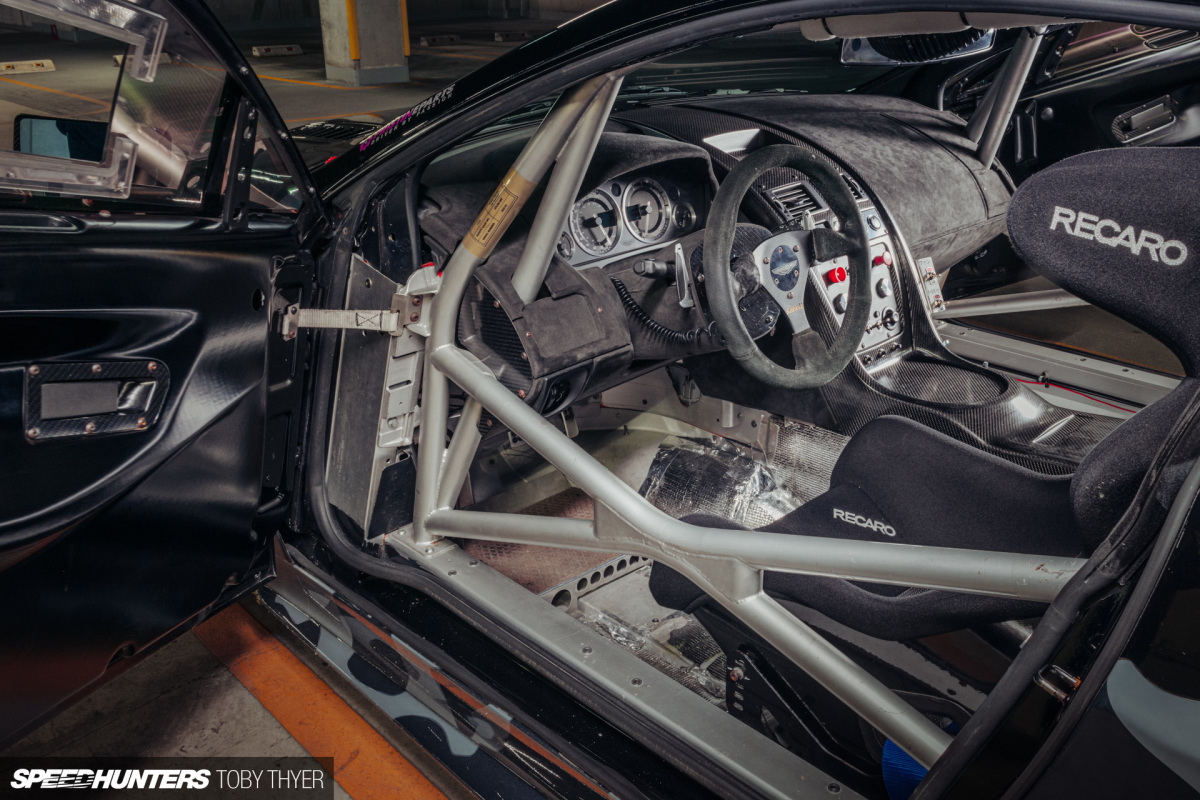
There’s no plush carpeting or cup holders in here – it’s as bare as any purpose-built race car out there. After about the fifth time asking “is that factory?” and Hiro-san’s reply being “yes”, I focused on trying to get the best photos I could in such a tight space. The most obvious factory piece is the integrated FIA-approved aluminium roll cage, which joins directly to the lightweight bonded aluminium chassis.
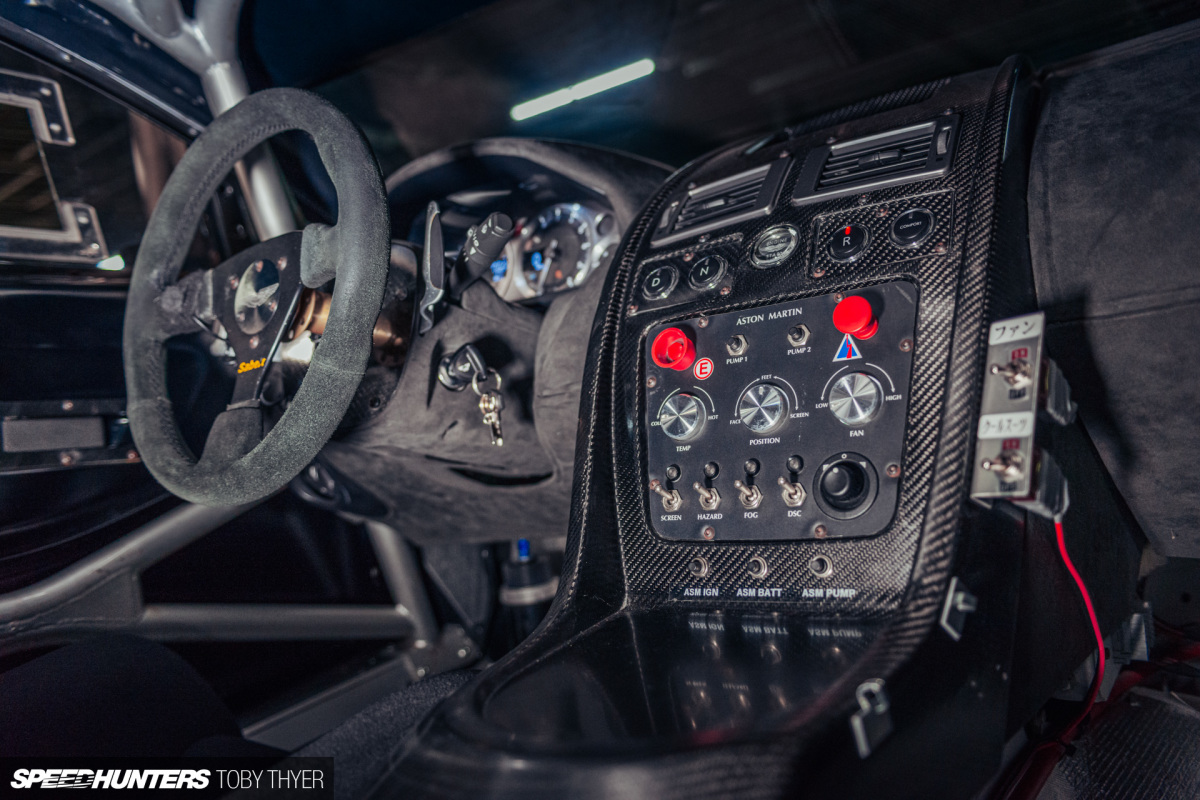
Everything is race-spec. Seats, race-spec. Interior trim (or lack thereof), race-spec. Seatbelts? Sabelt 6-point race harness, so obviously, race-spec.
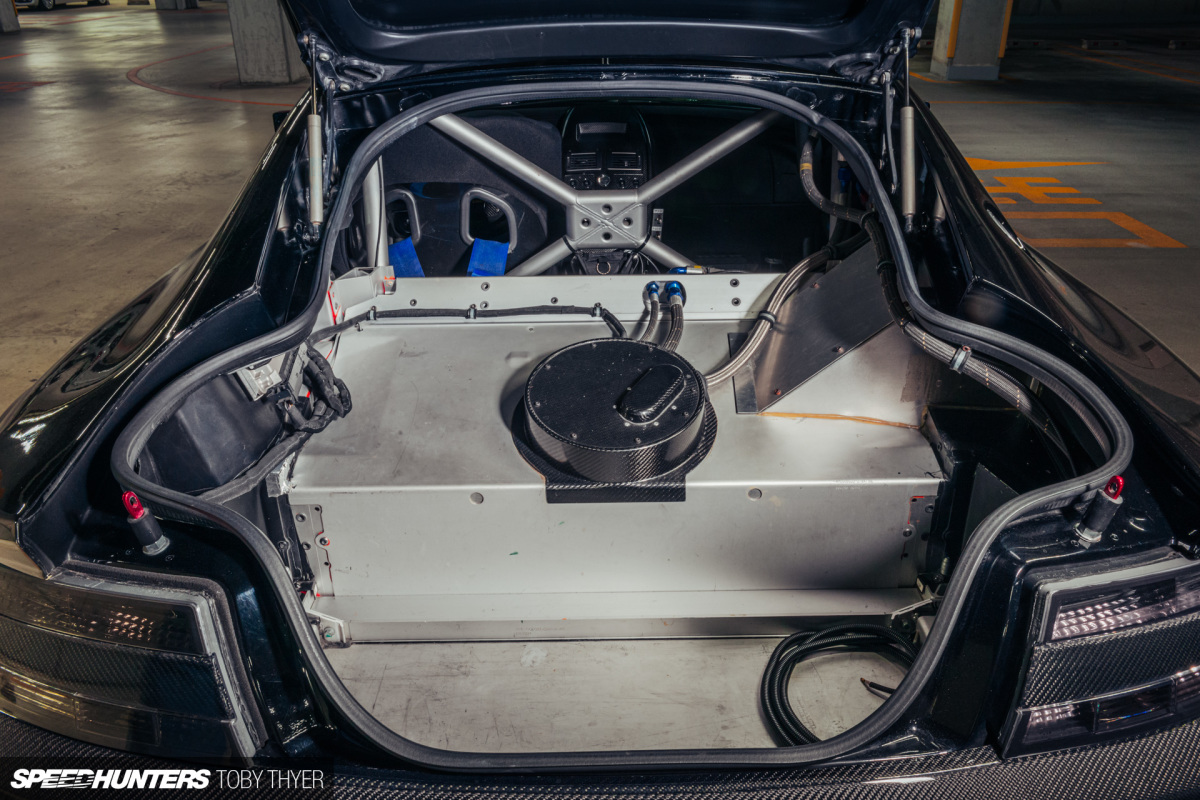
Out back sits an FIA-approved, 115-litre, centrally-mounted bag-type fuel tank with twin fillers, plus room for a set of golf clubs.

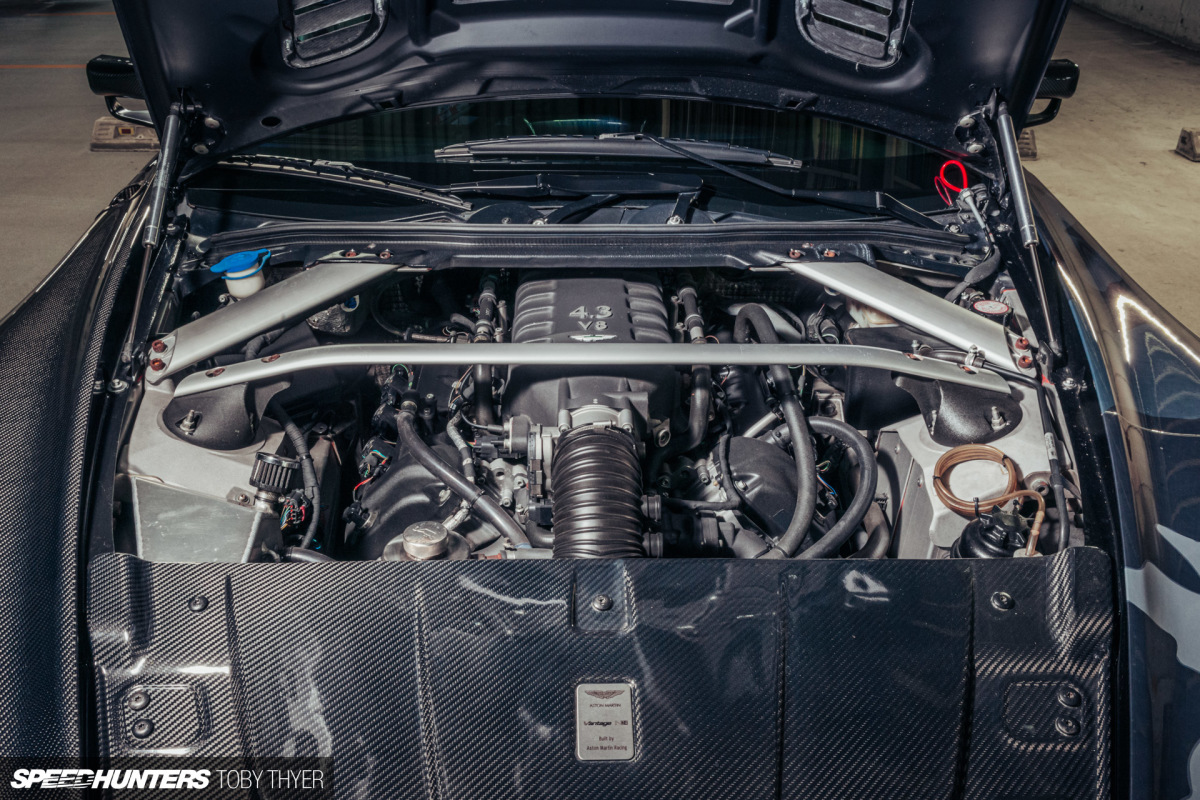
Under the hood you’ll find the glorious 4.3-litre V8 from the Vantage road car, tuned and calibrated for unrestricted mayhem. The cylinder heads have been ported and polished, and the crankshaft, connecting rods and pistons are all lightened and balanced. There’s also a dry sump system to prevent oil starvation through extreme cornering under high g loads
The little blue nozzle is one of two under the hood; they’re part of a fire management system, should things get a little too spicy. There’s even an onboard air jack system for fast wheel and tyre changes in the pits of your favourite circuit.


When it comes to classic British muscle cars, the Vantage has always been up there with the likes of the Bentley Continental GT, Jaguar XKR and Aston Martin’s other model, the DBS. From front on, the camo wrap and bulging arches looks almost playful, but the staunch silhouette from behind is a little more menacing. You also get a fantastic view of the lightweight exhaust system, which is straight-piped like a boss.


While there are (thankfully) no similarities to the first hand-built cars that came out of a little warehouse in London during the turn of the century, the ethos behind these cars remains: Extreme build quality designed for the racetrack, disguised in a gentleman’s tuxedo tailored for the ballroom floor.


I may not be a GT guy, but a V8 race car you can take through a Mos Burger drive-thru gets my approval all day long.
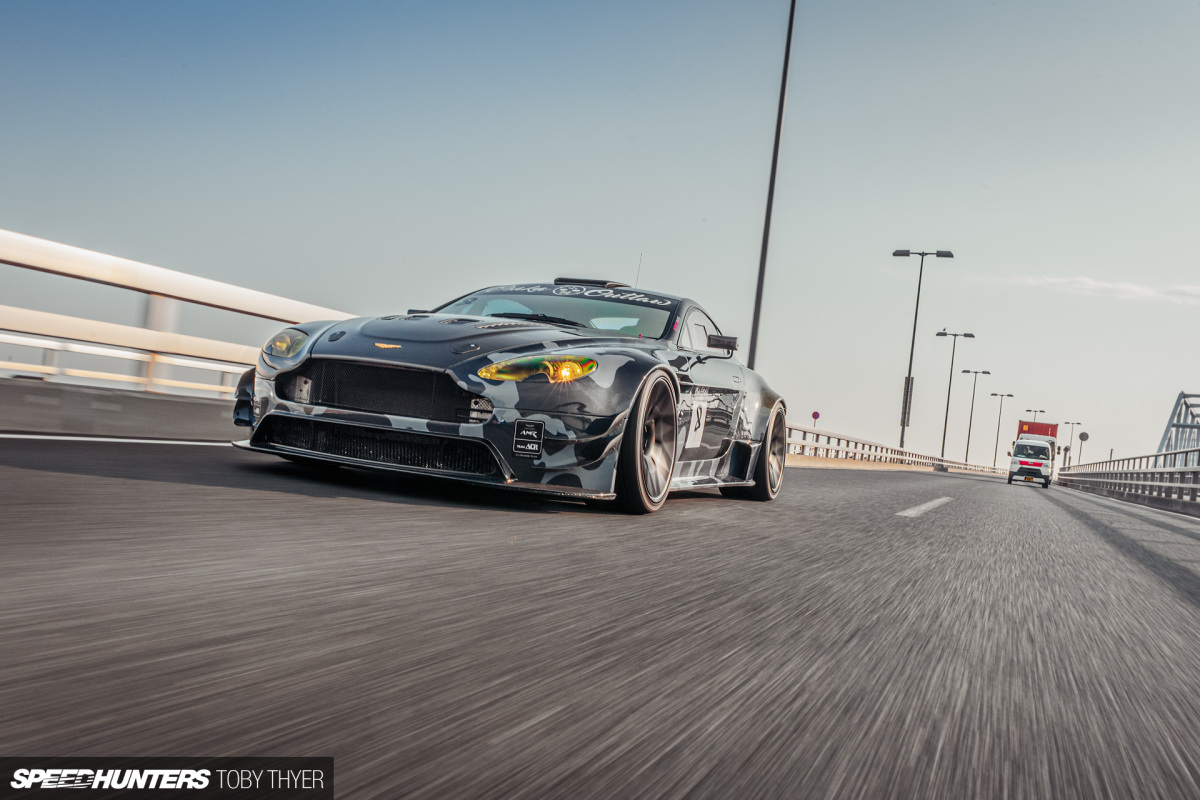
It would be crazy to bang on about how much of a race car this thing is and not see it in action, so in the upcoming weeks I’ll be heading to Tsukuba with Hiro-san to see what the Aston Martin Vantage N24 is capable of with an experienced driver behind the wheel.
Toby Thyer
Instagram _tobinsta_
tobythyer.co.uk














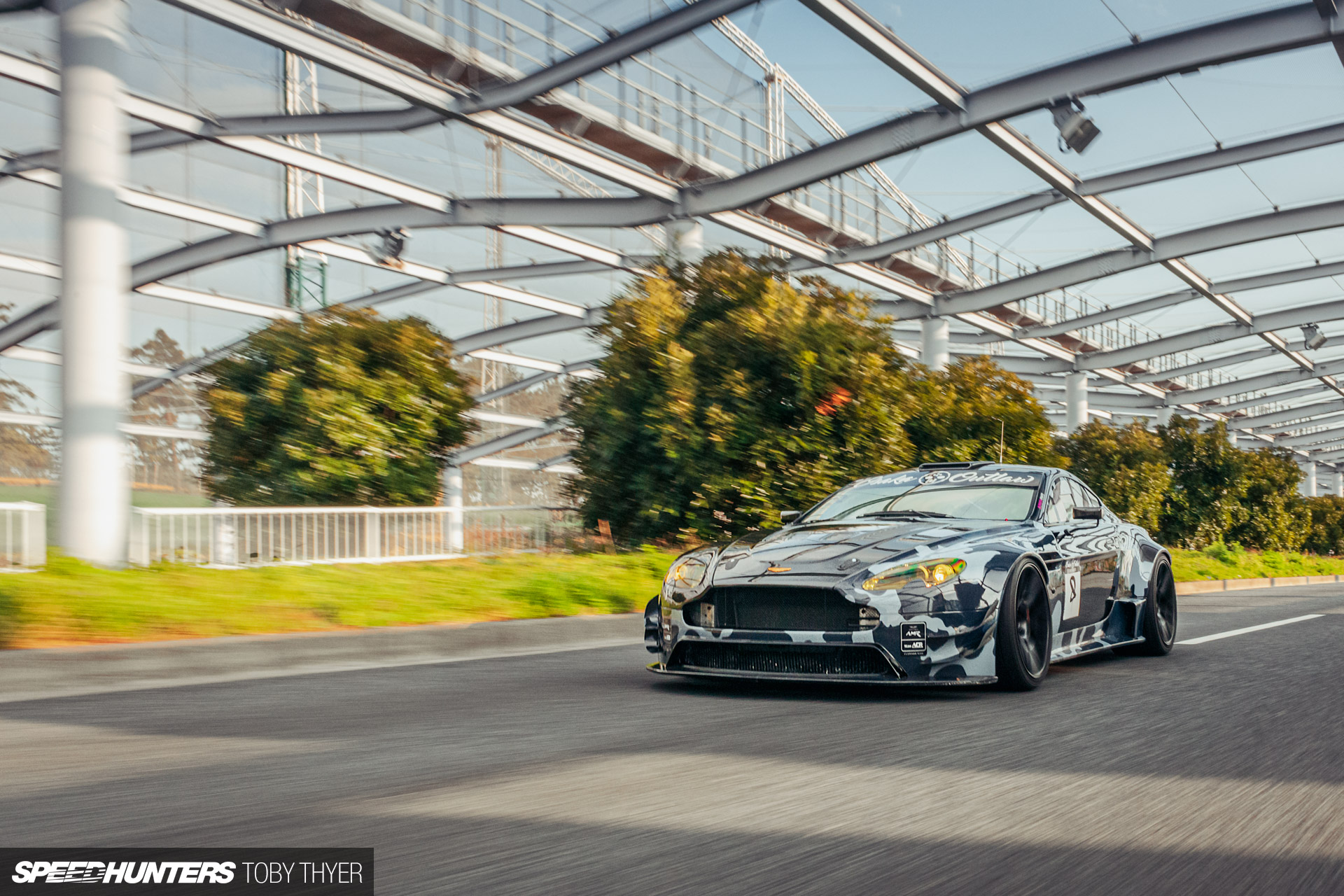

































































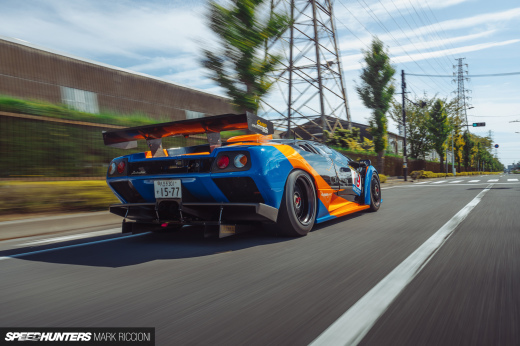




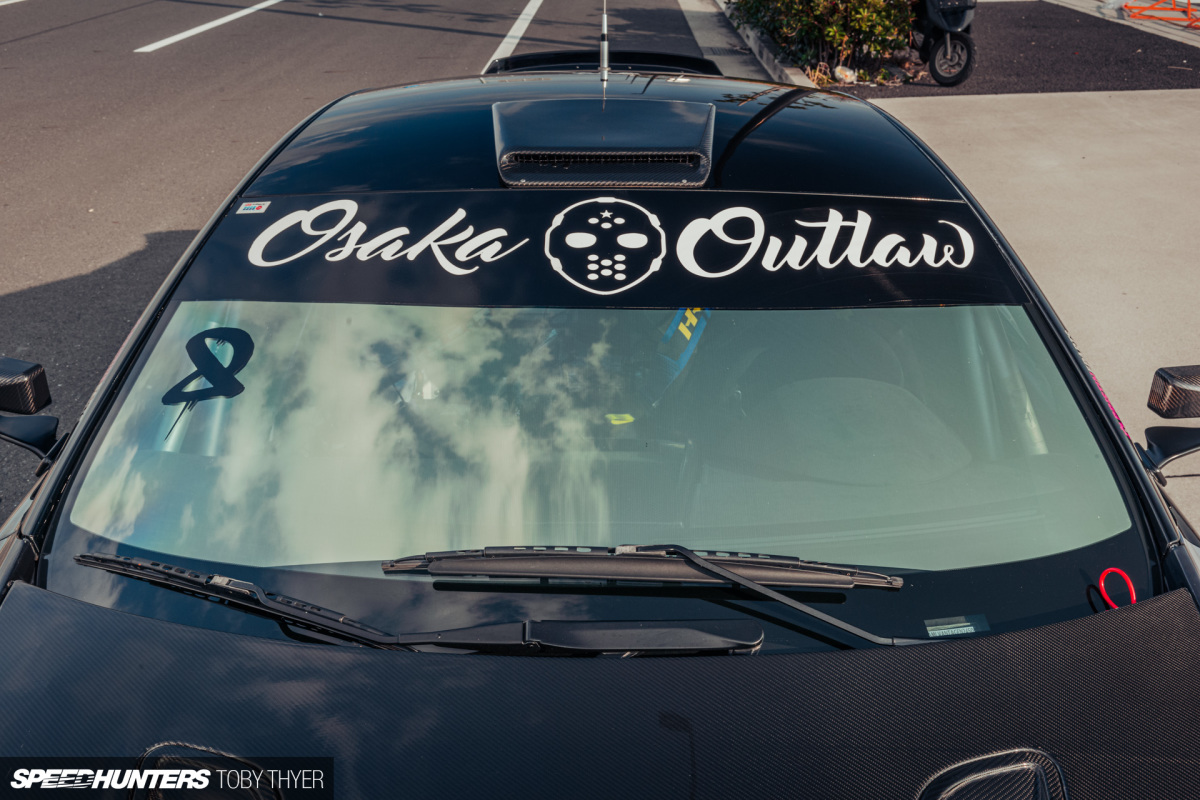
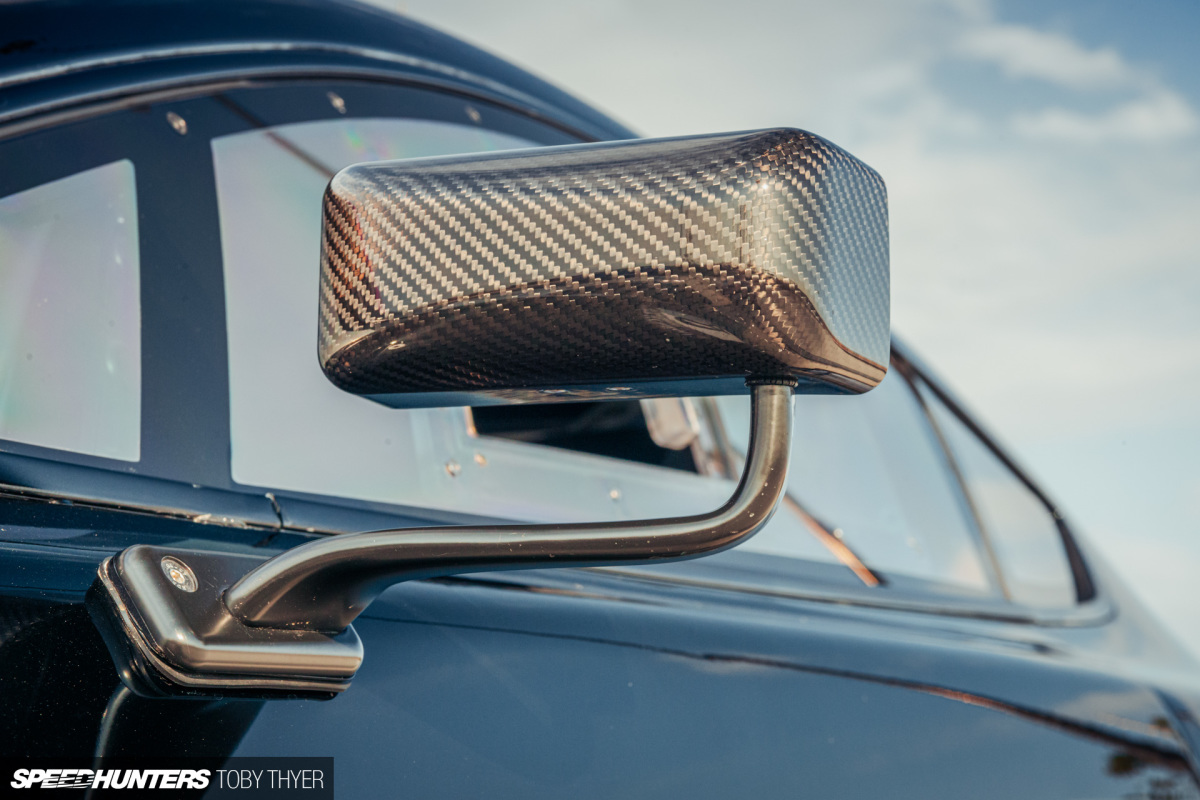
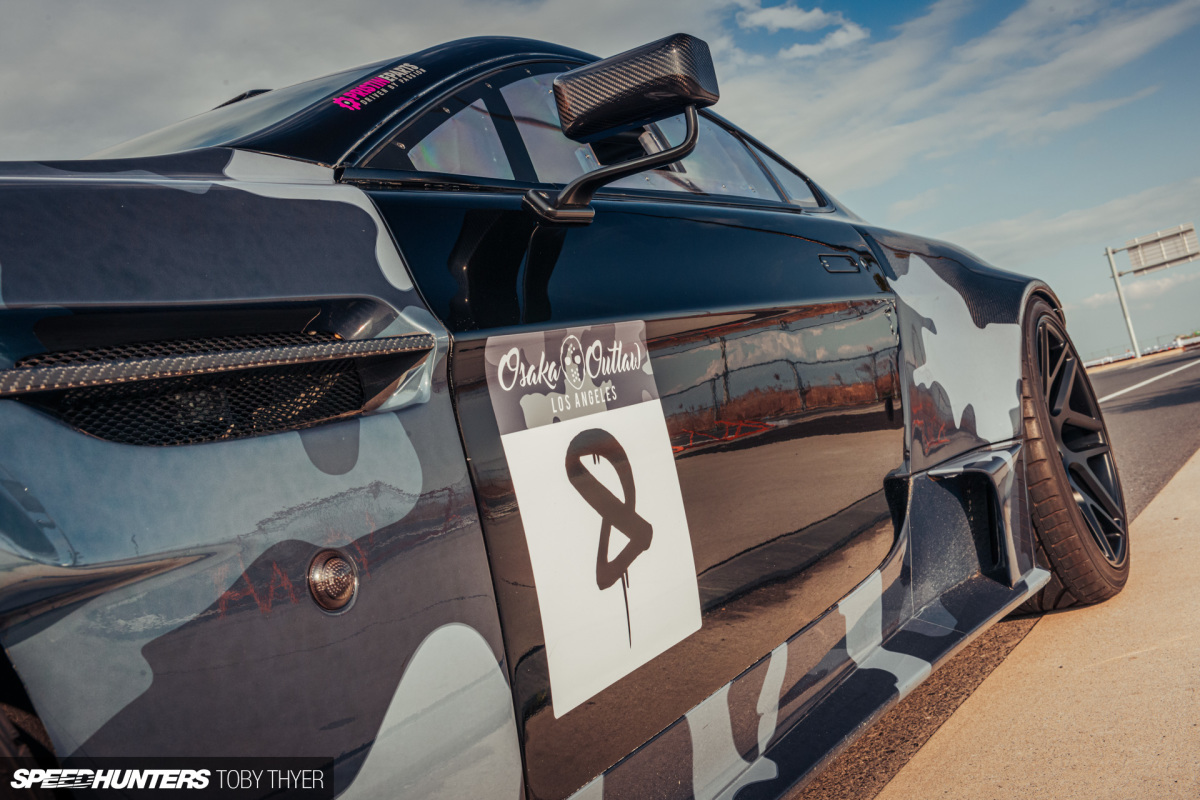
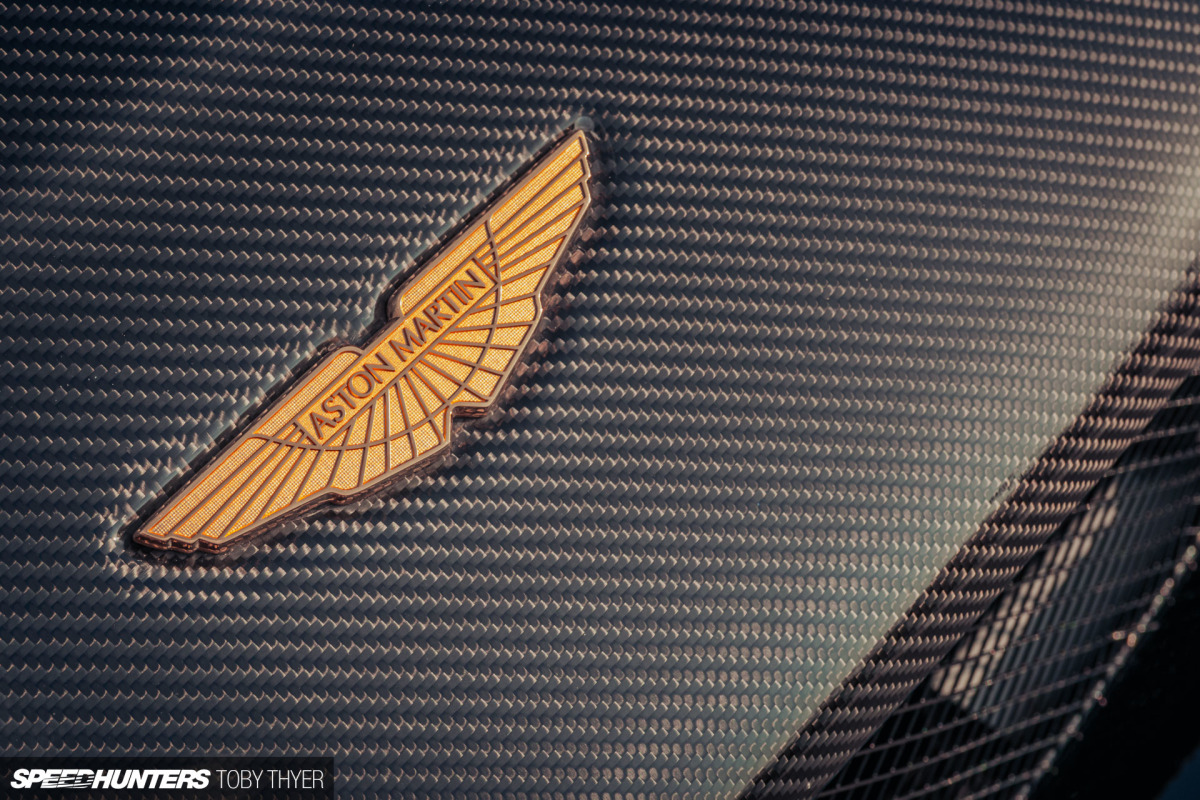
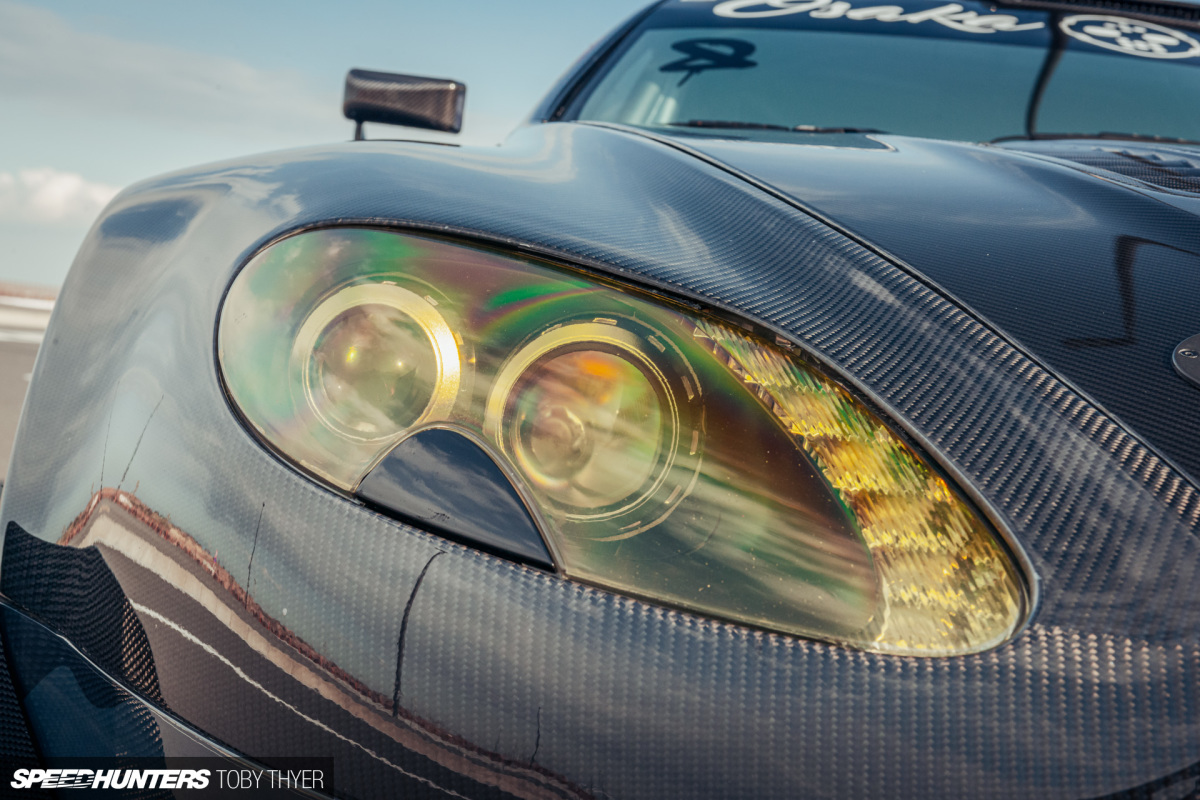
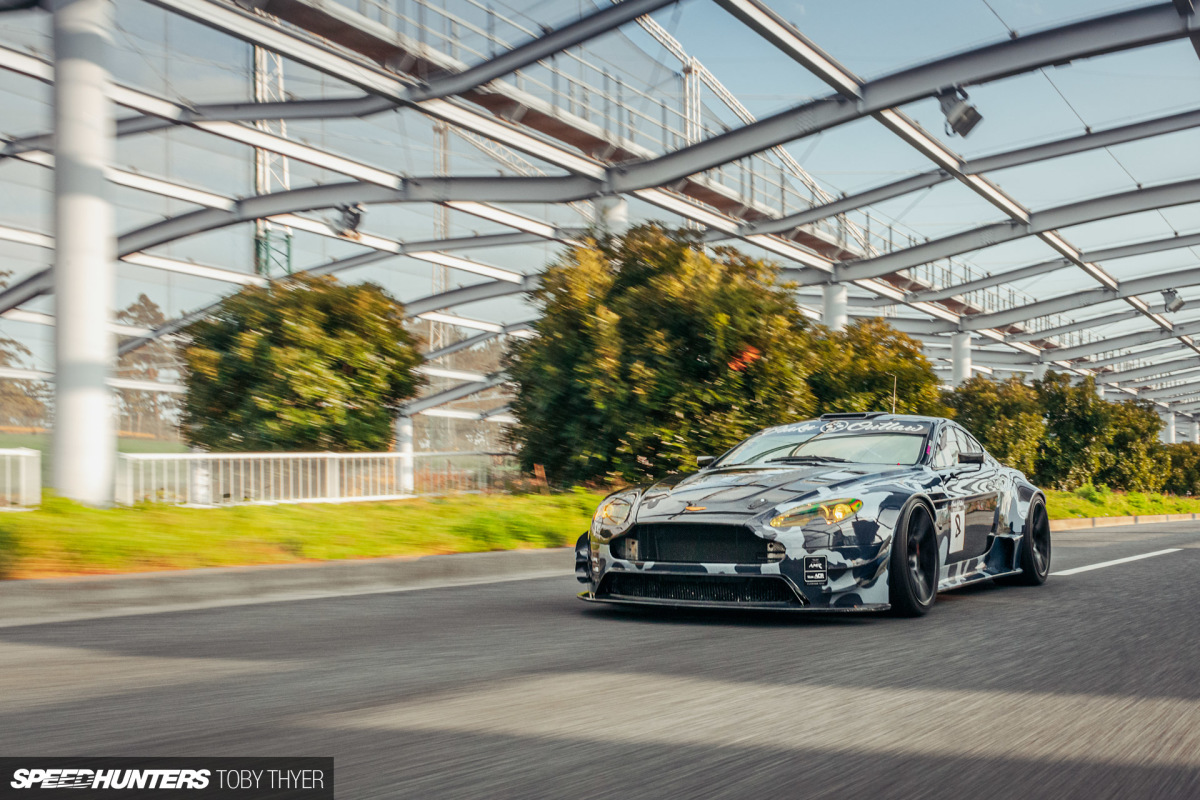

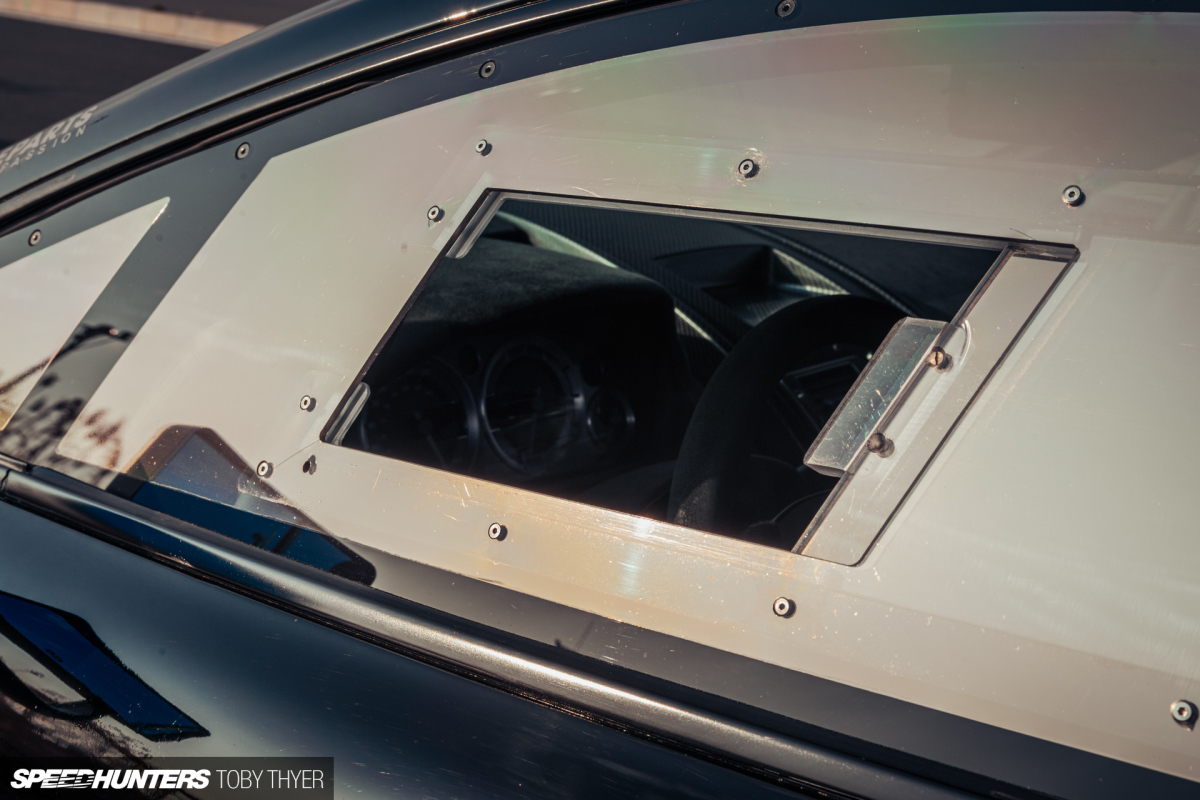
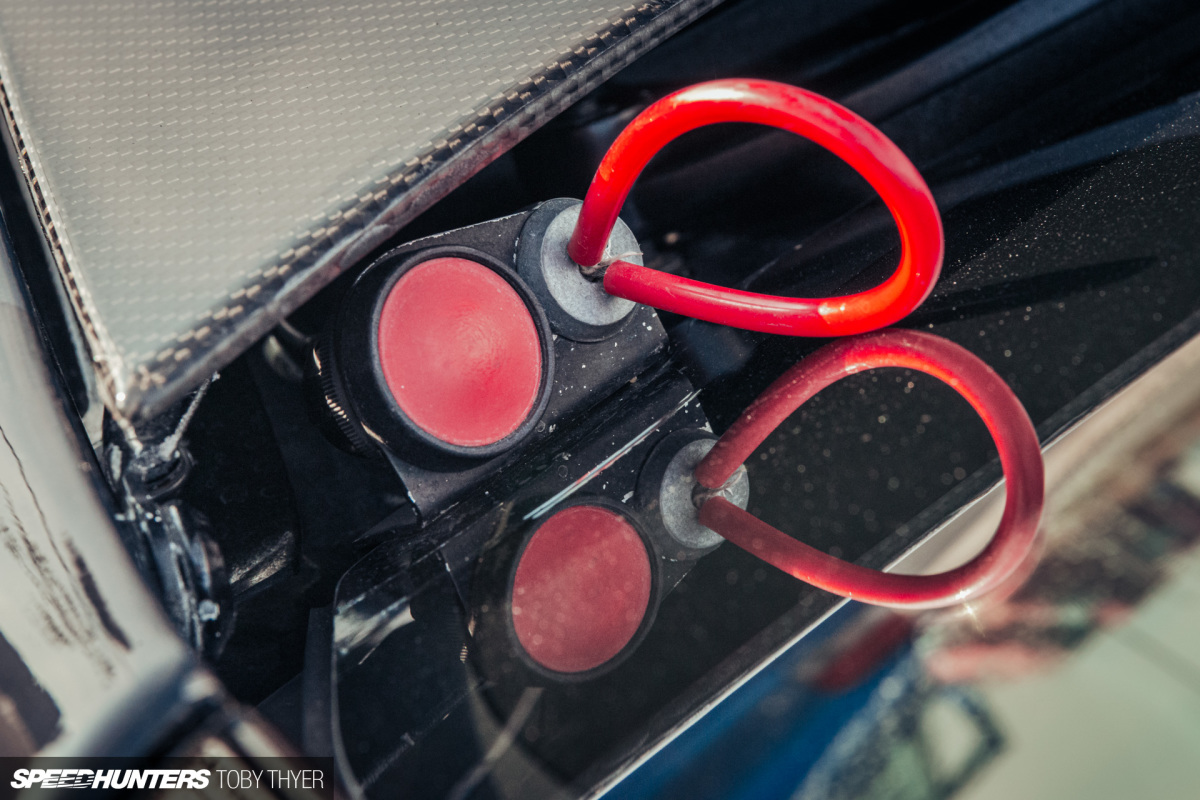
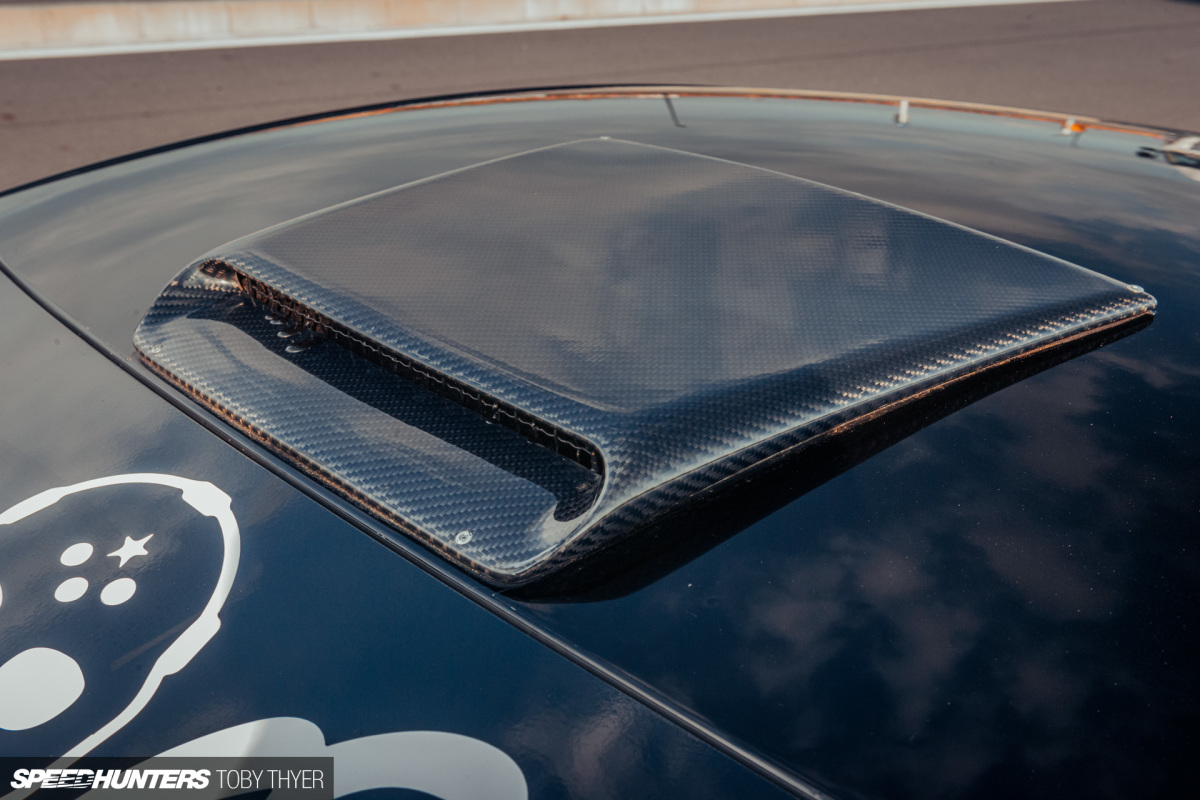
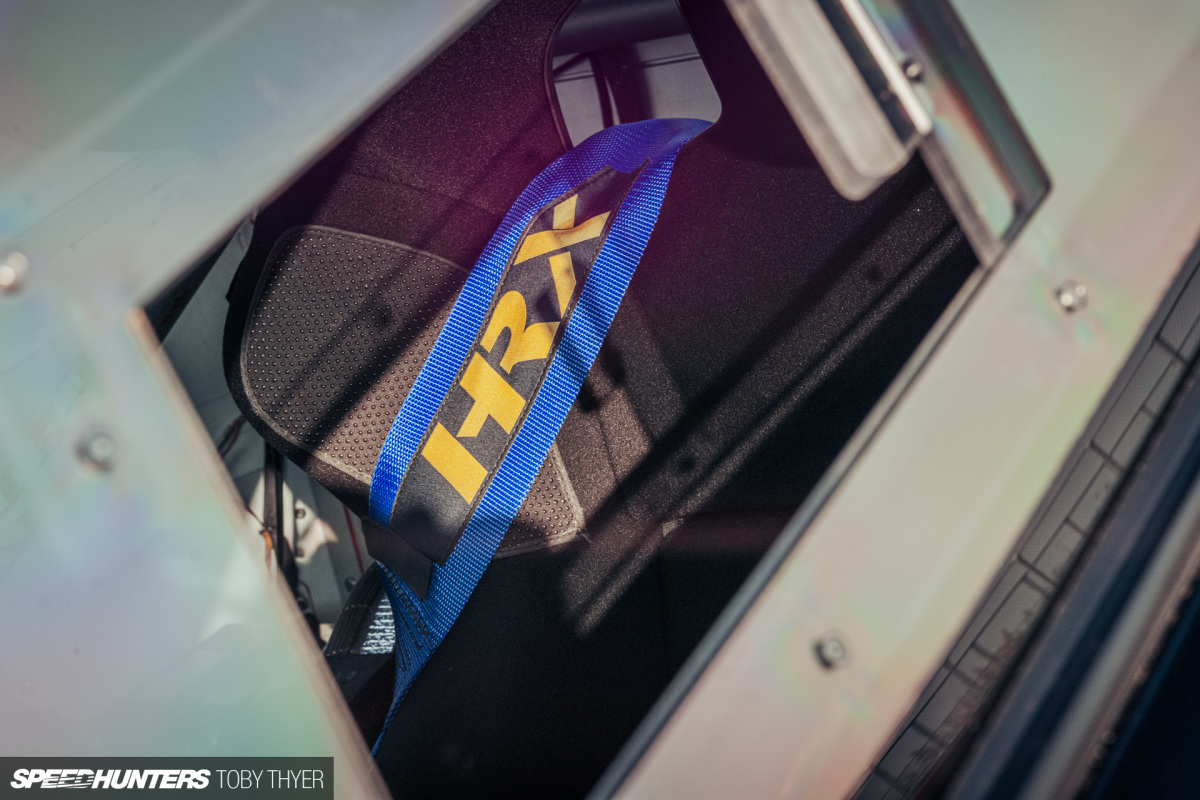
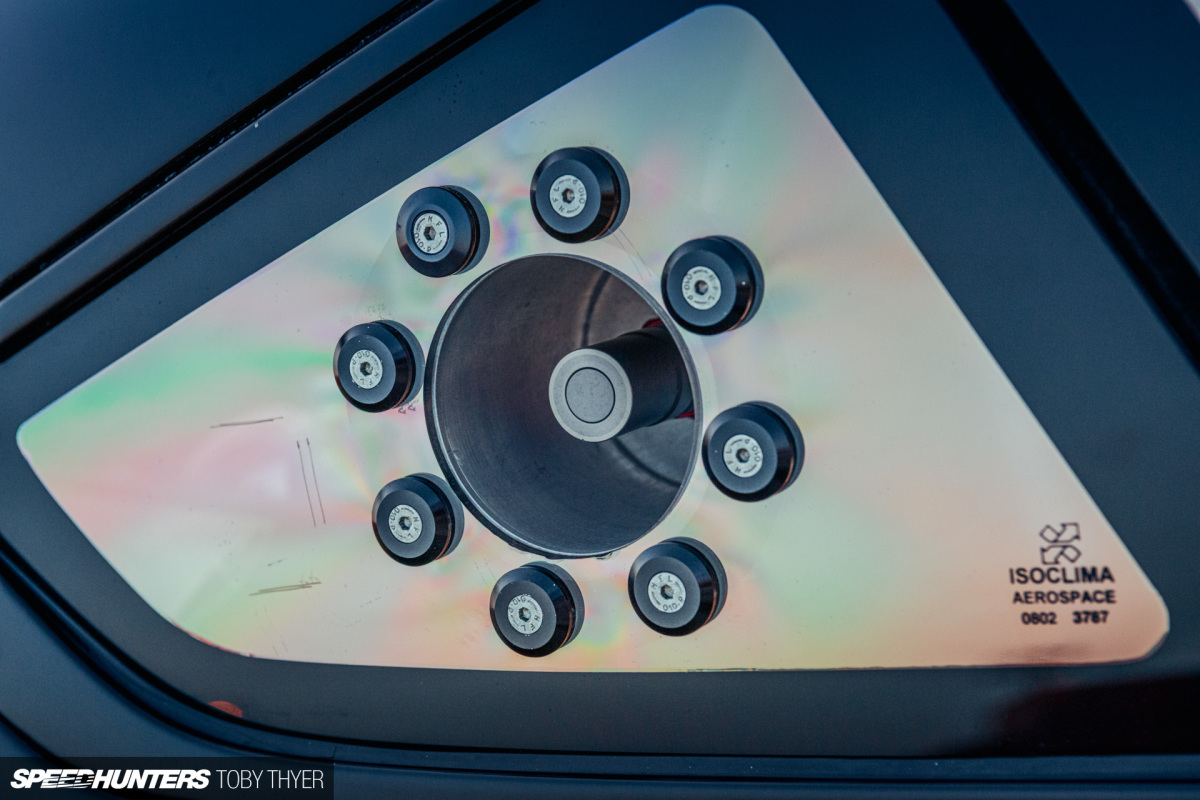
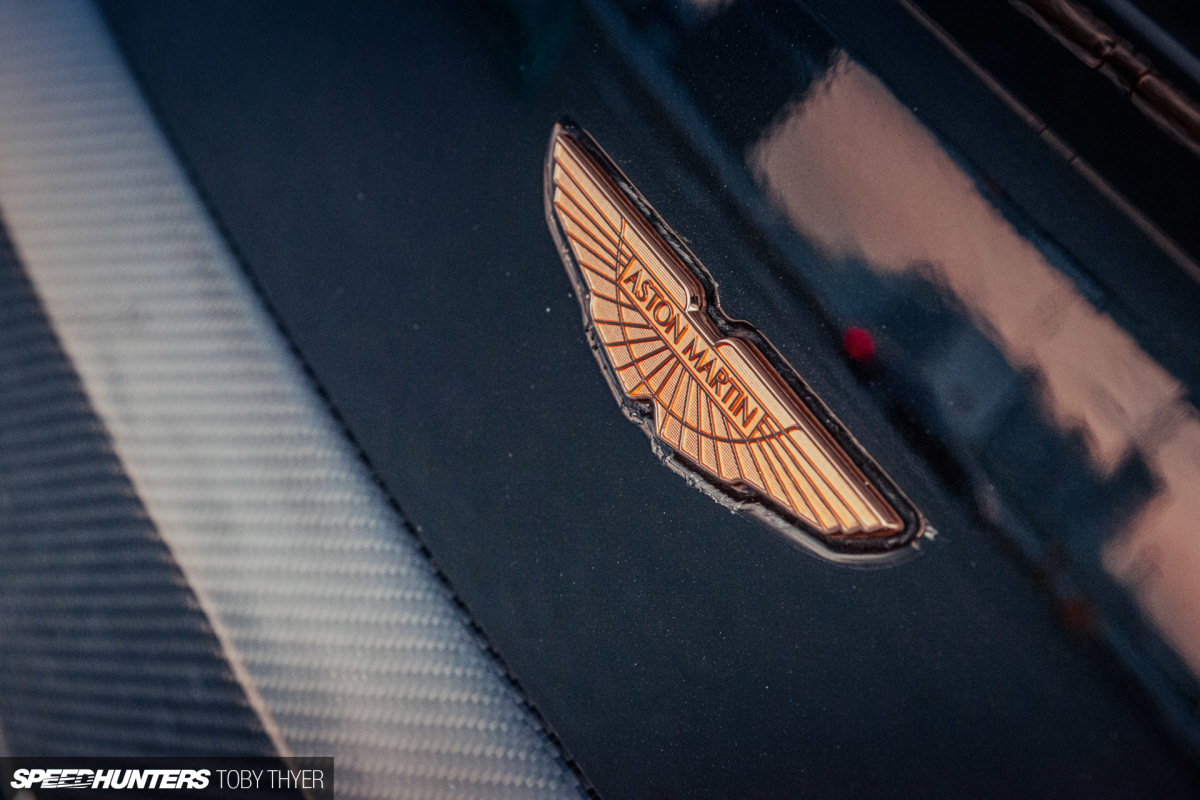
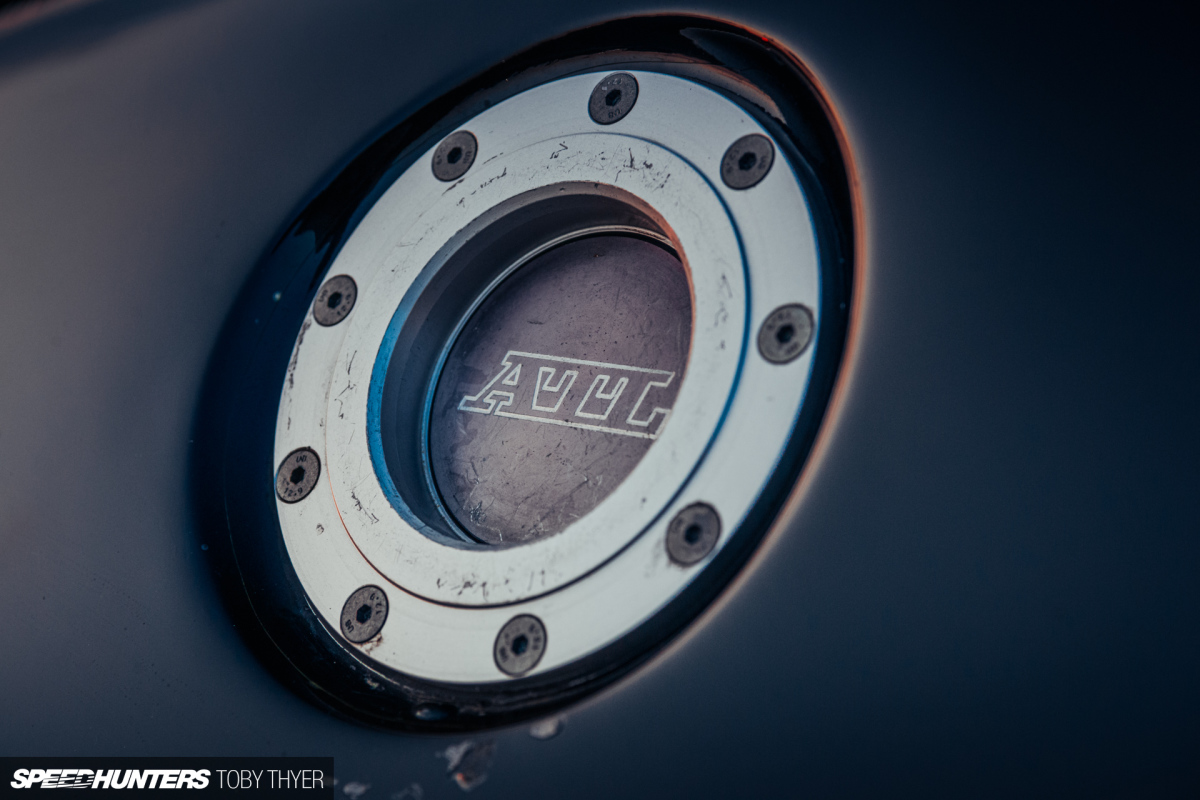
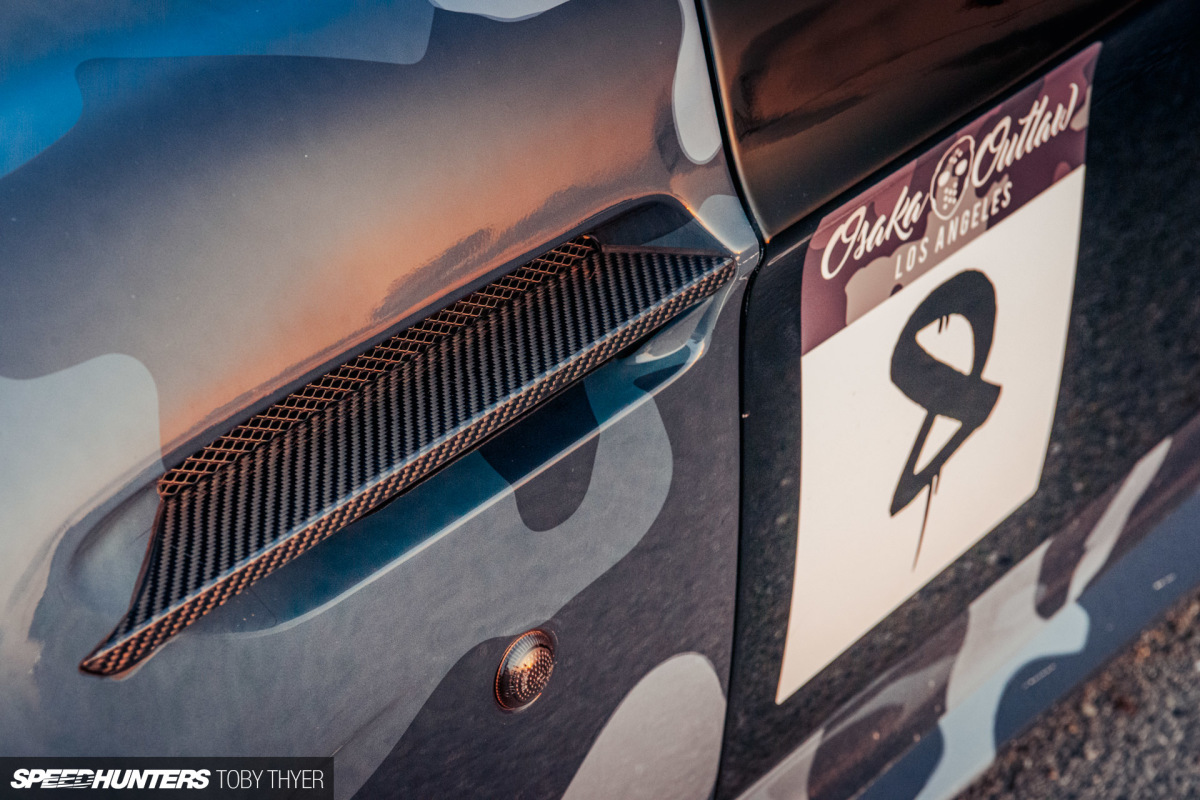
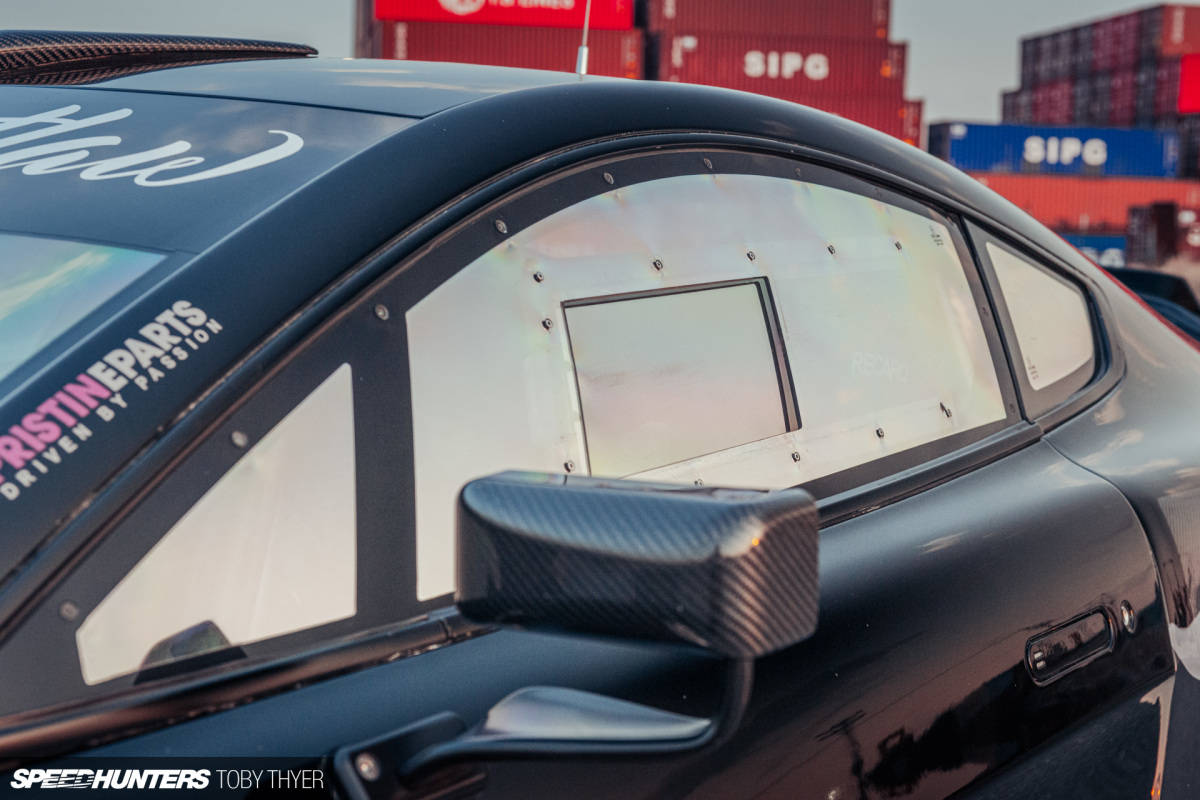
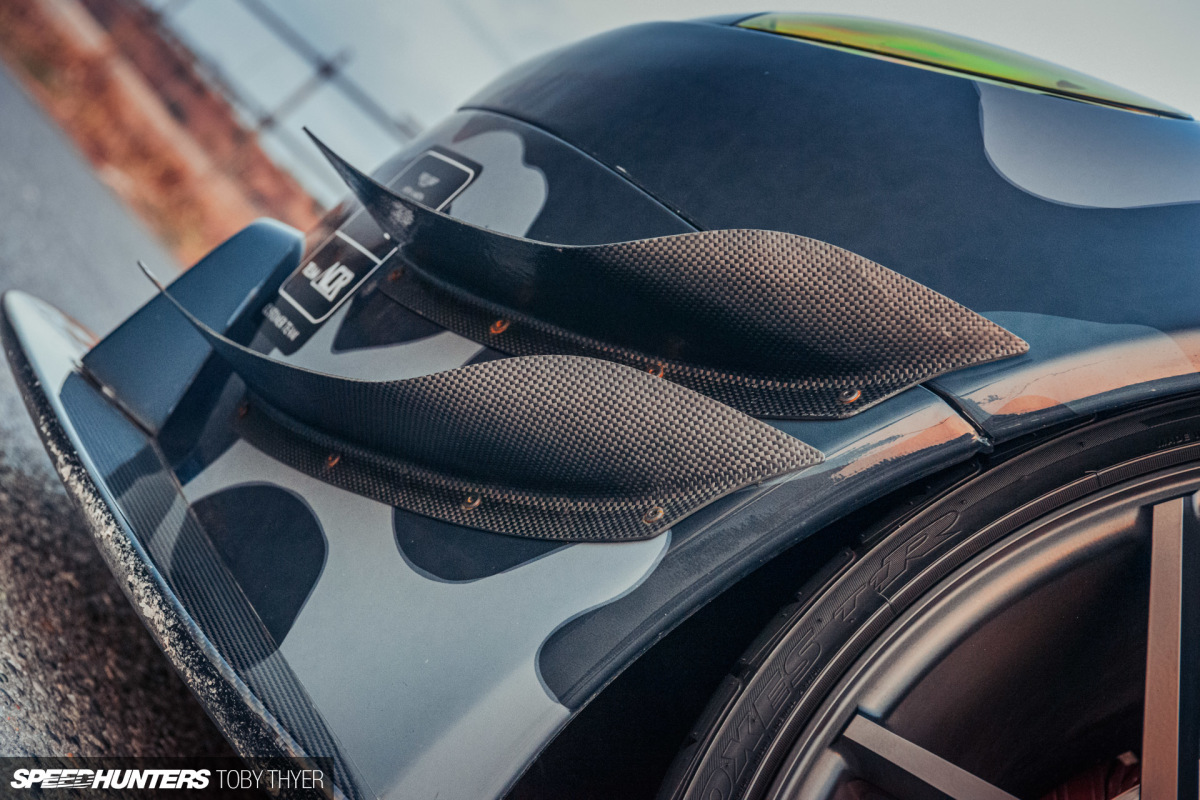
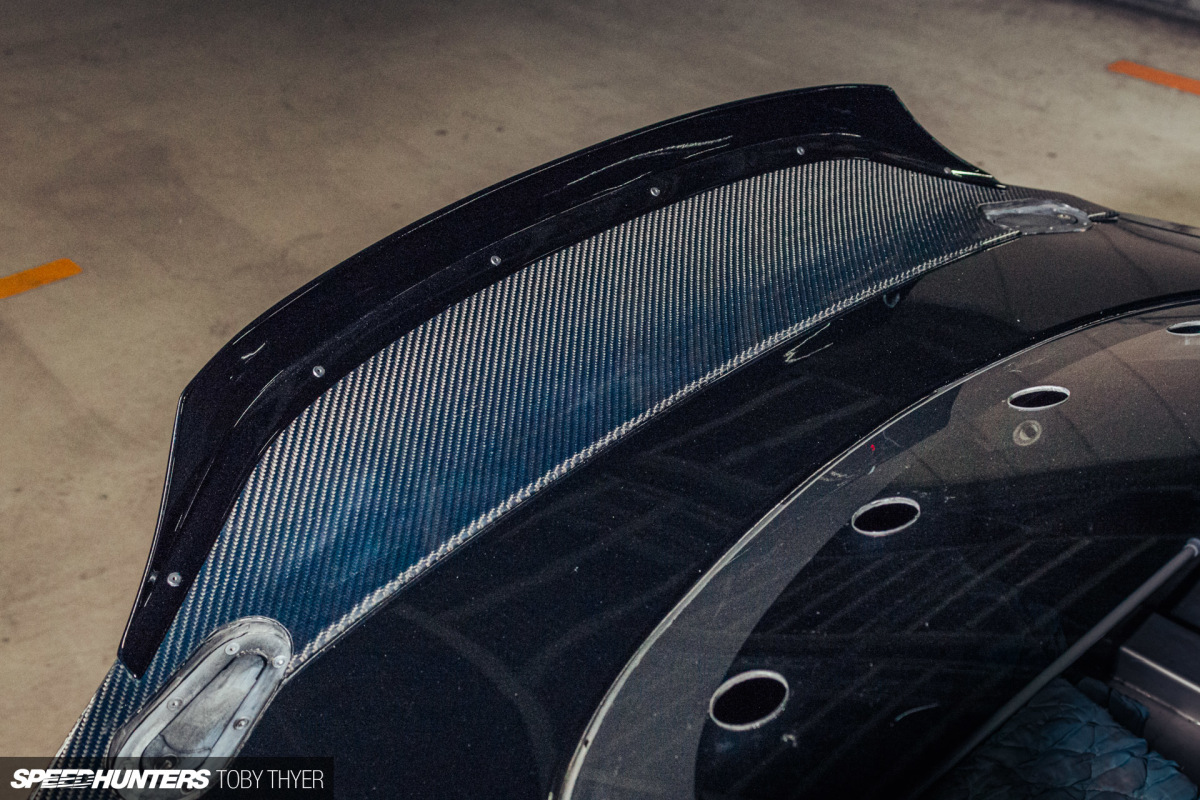

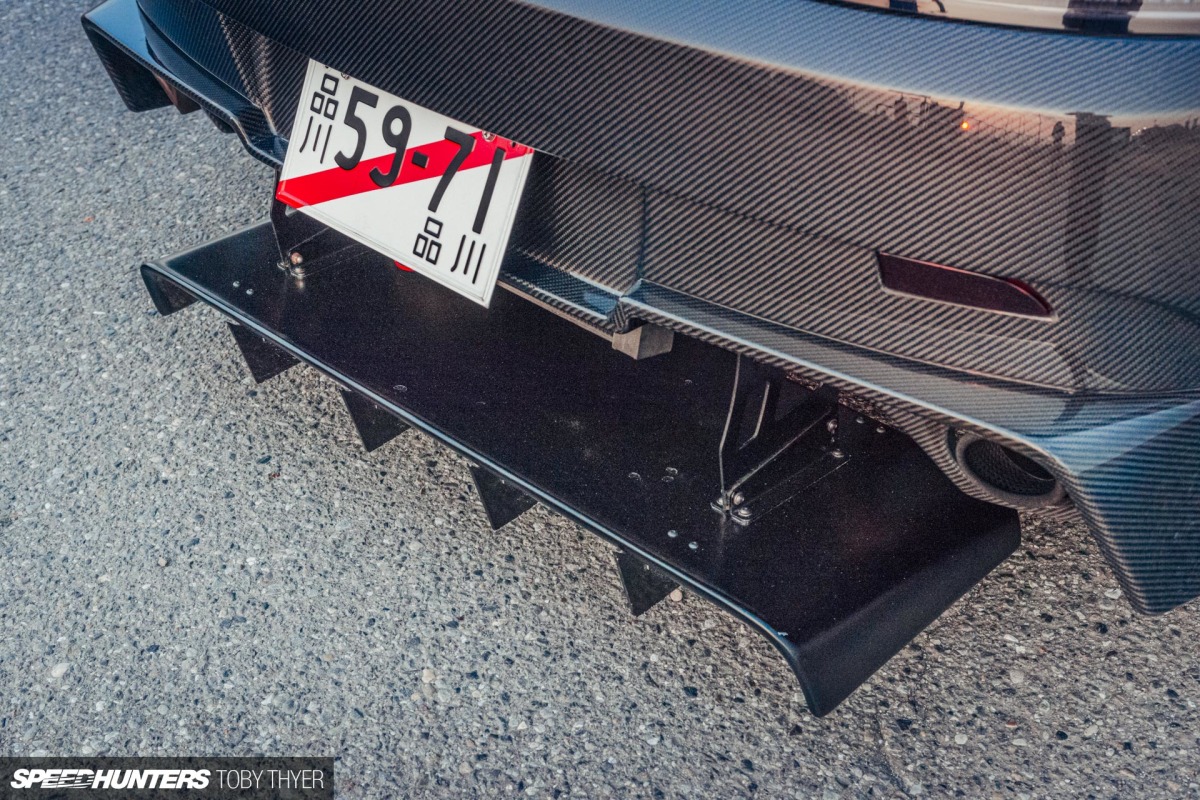




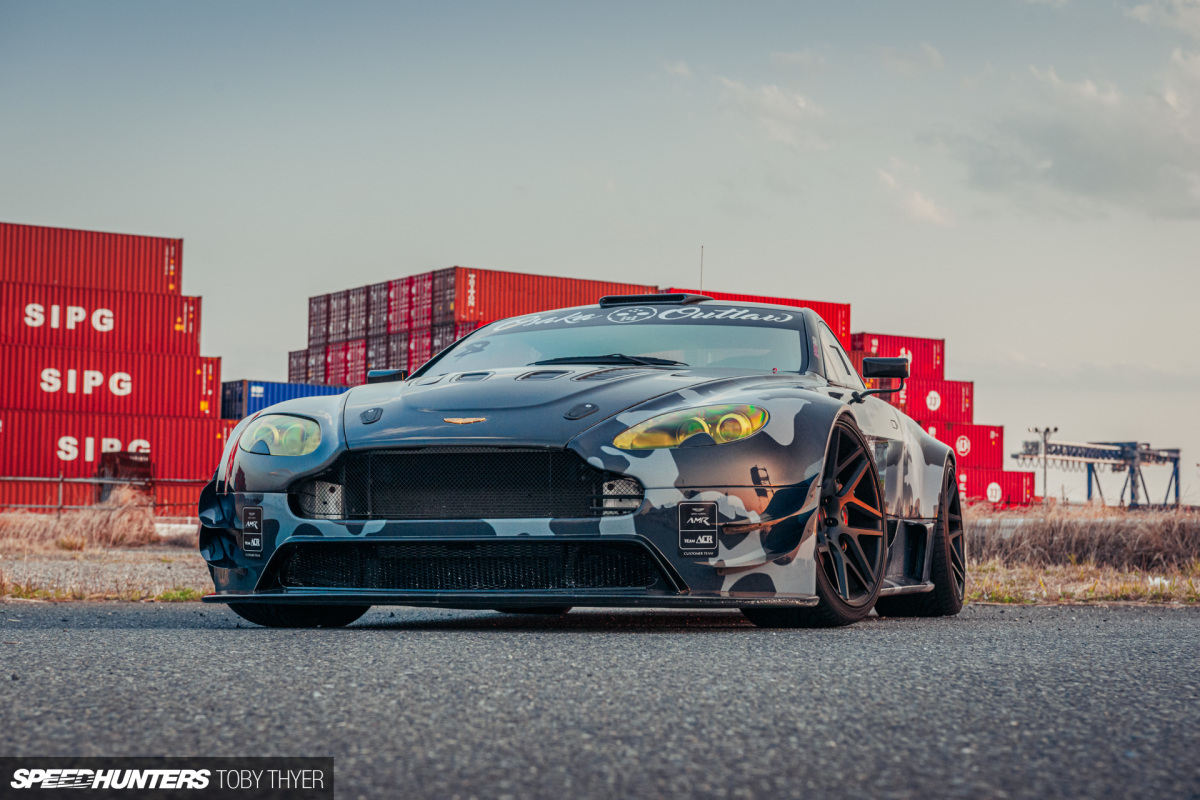


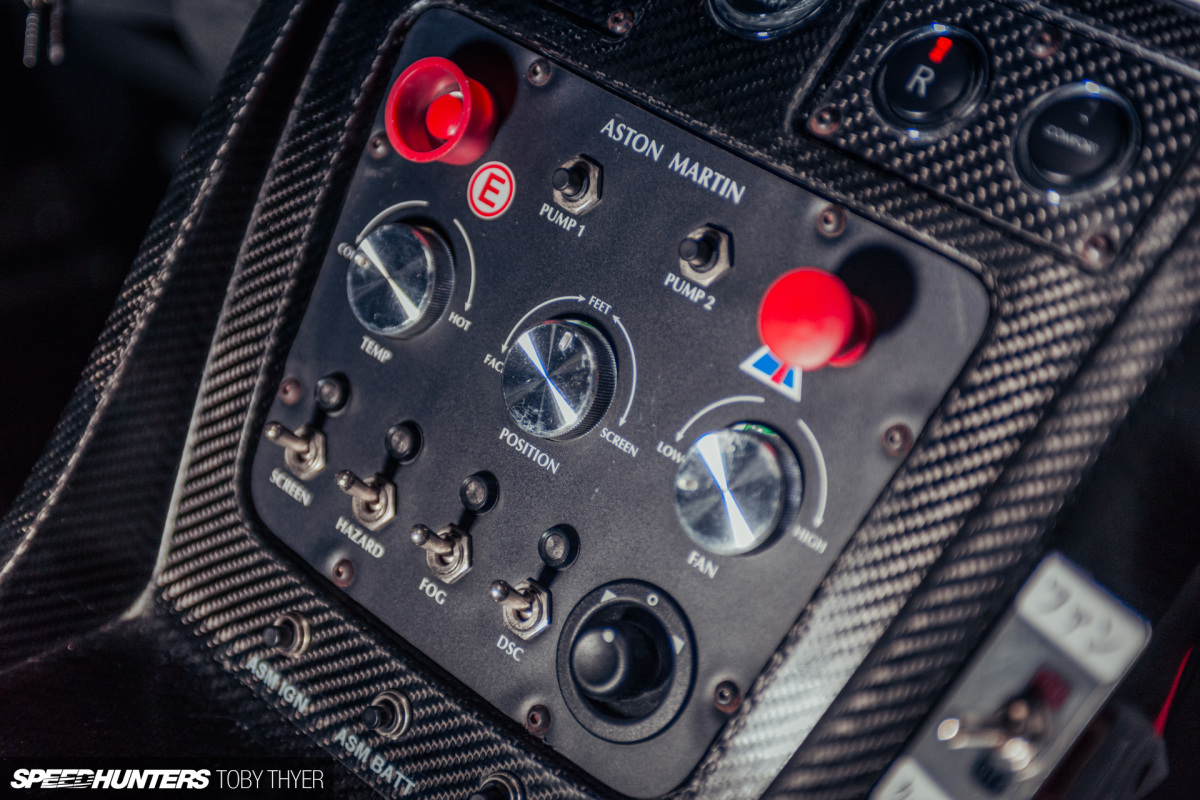
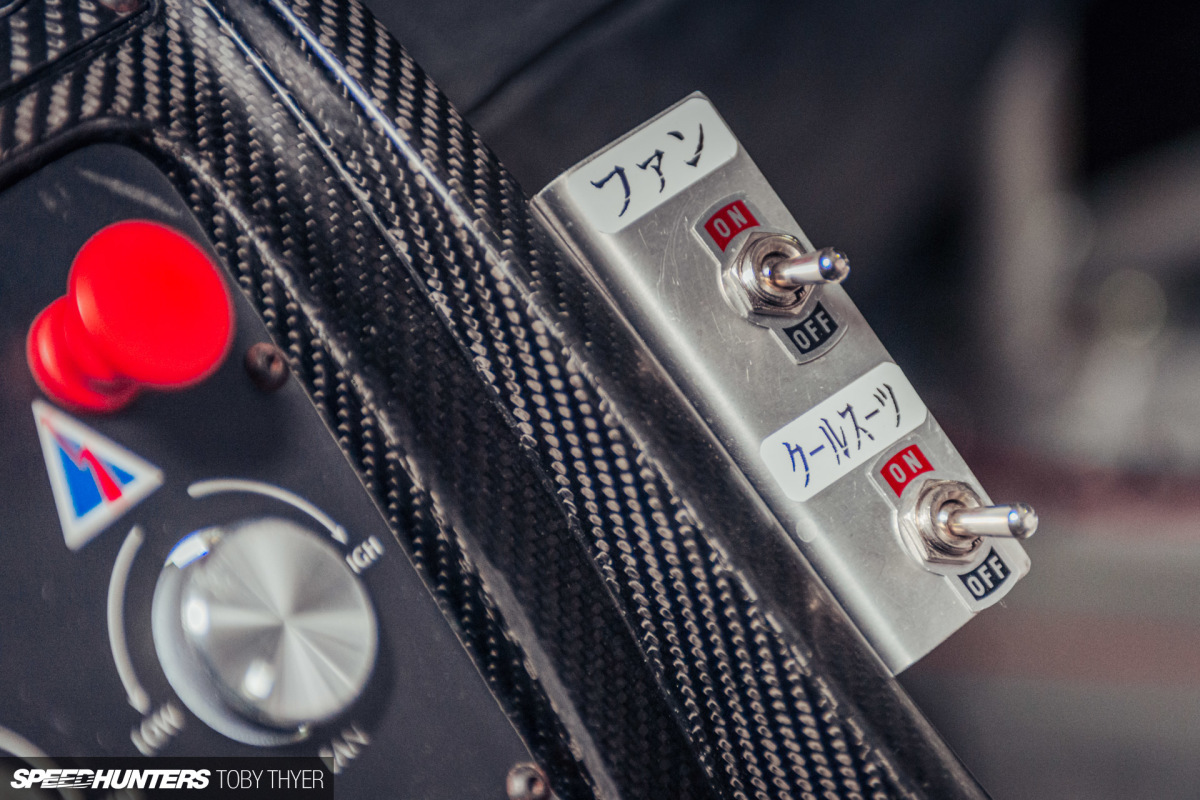
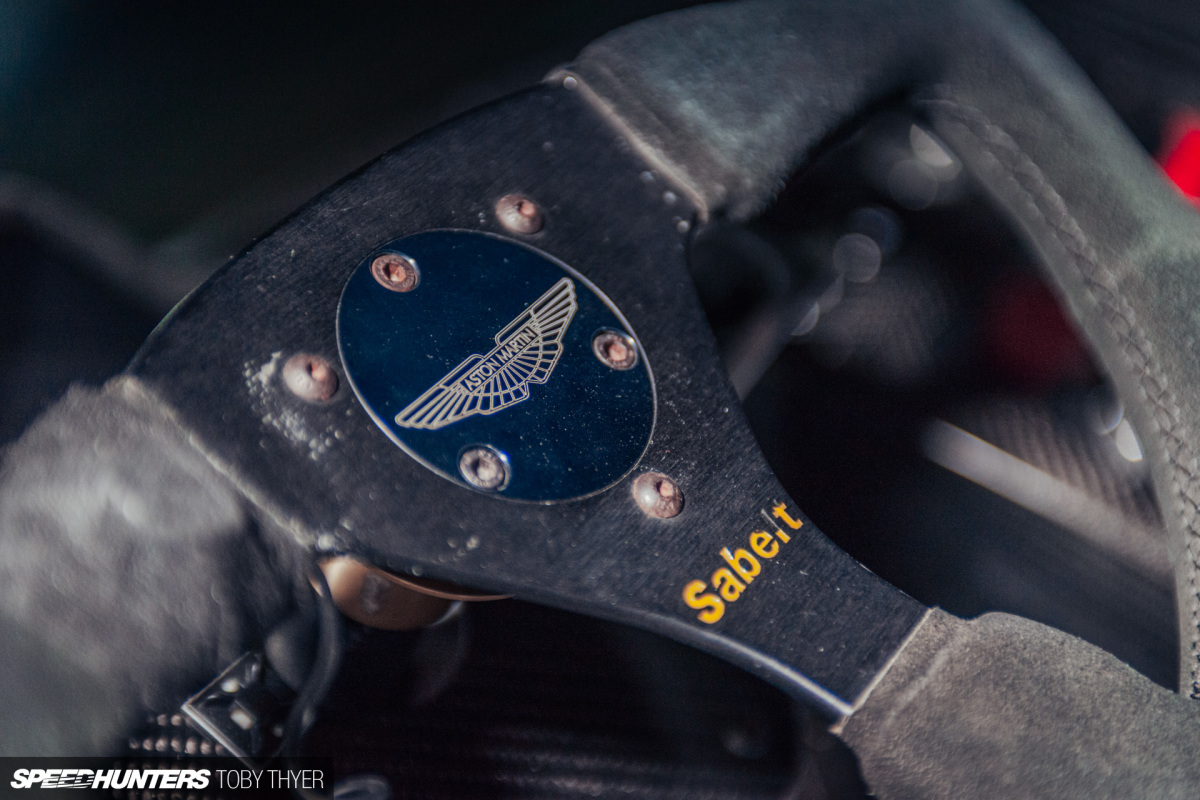
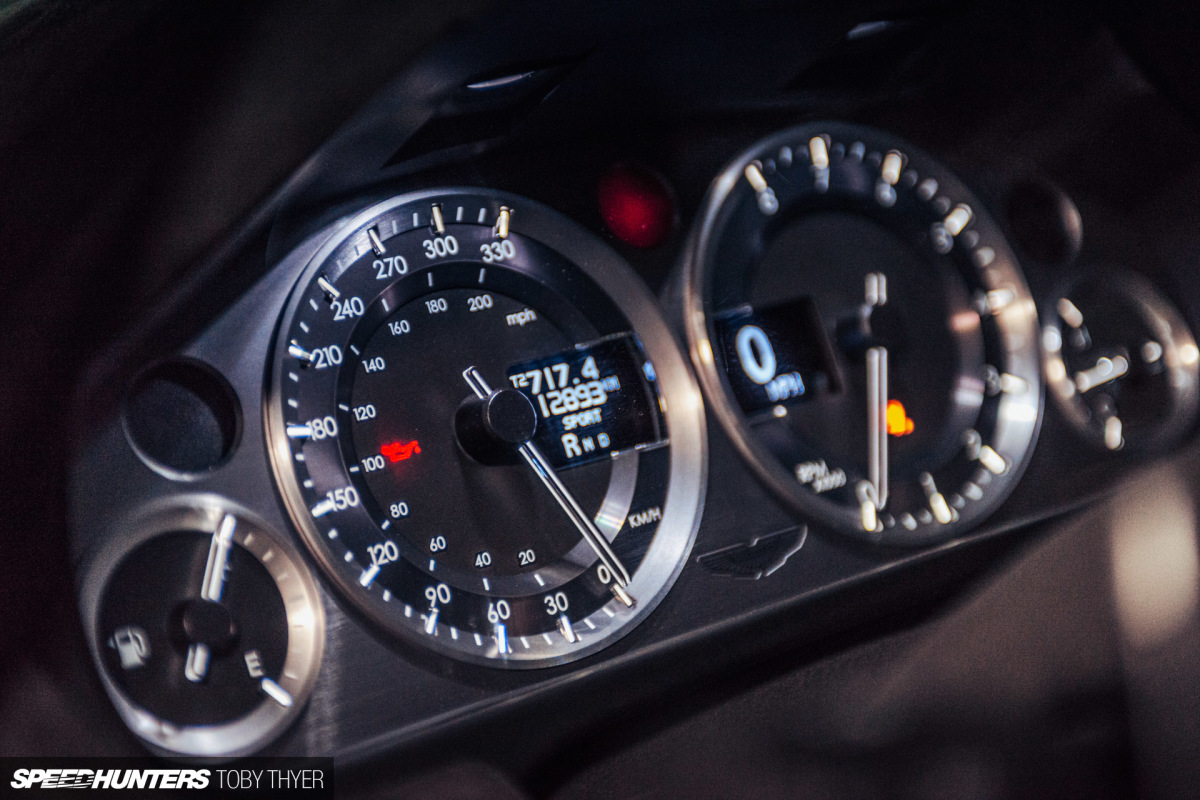
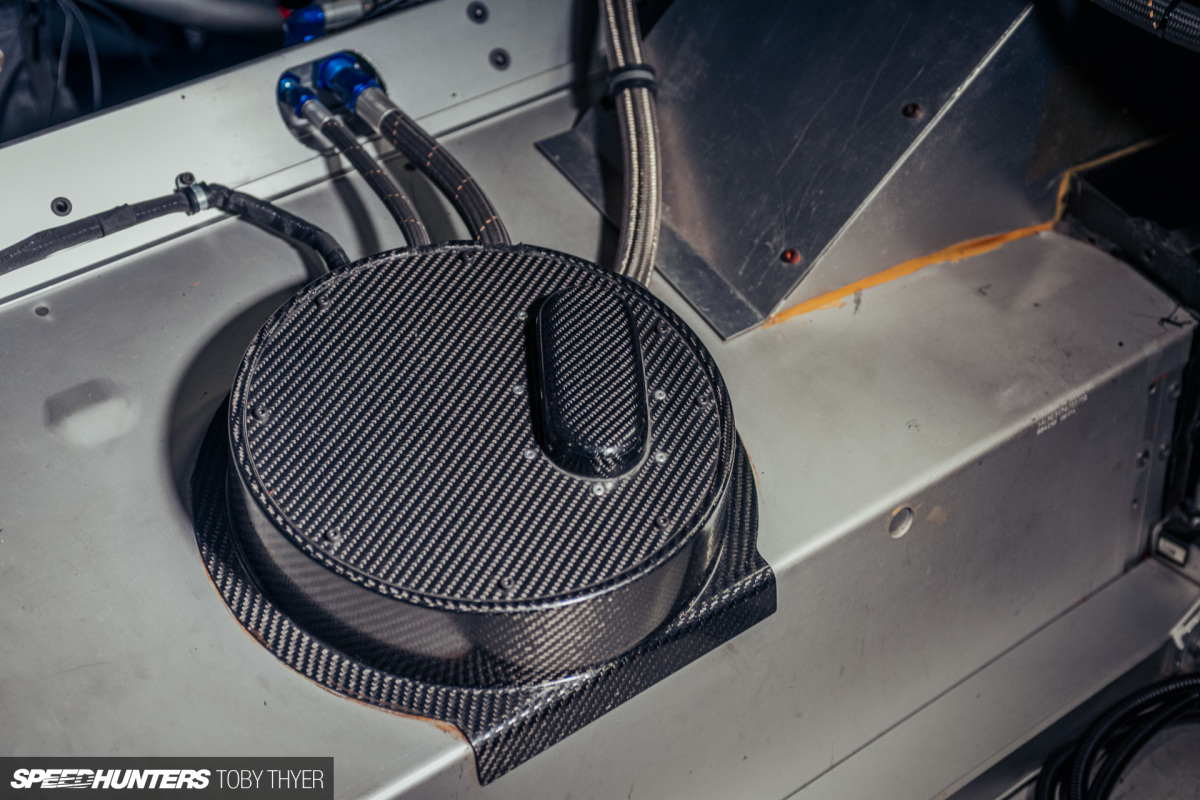
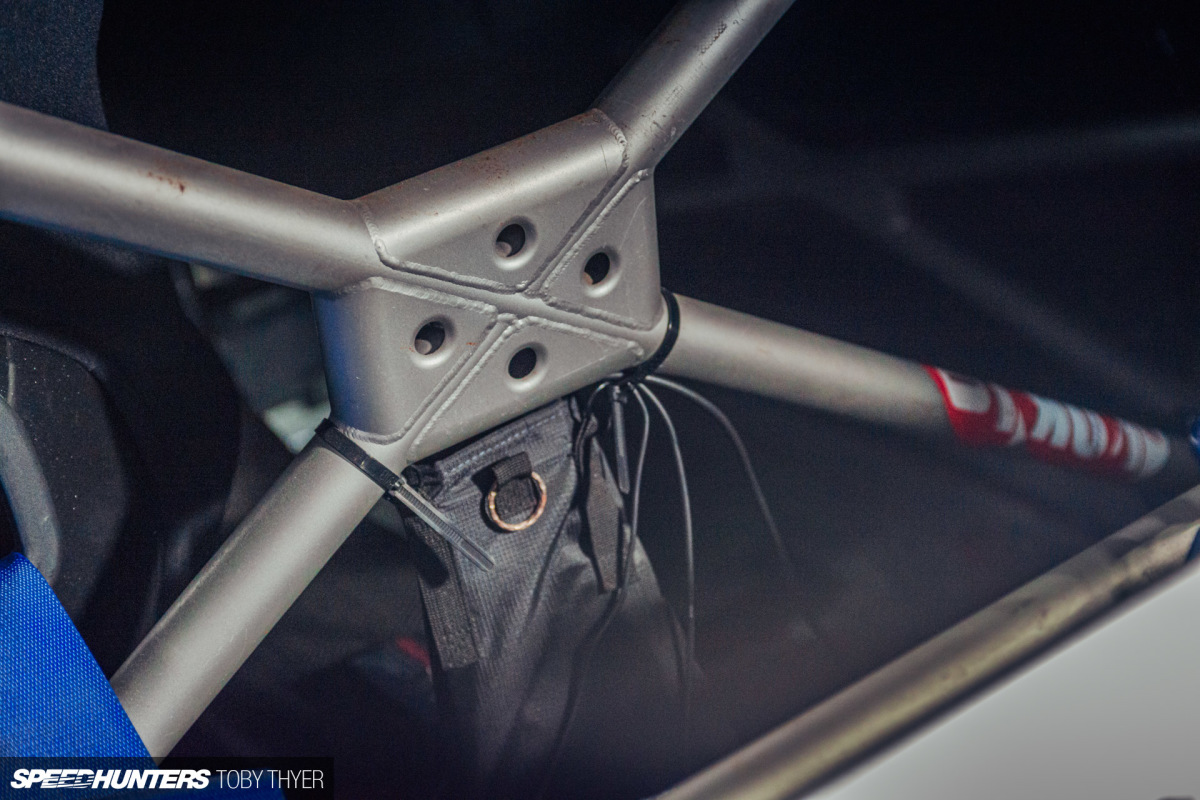
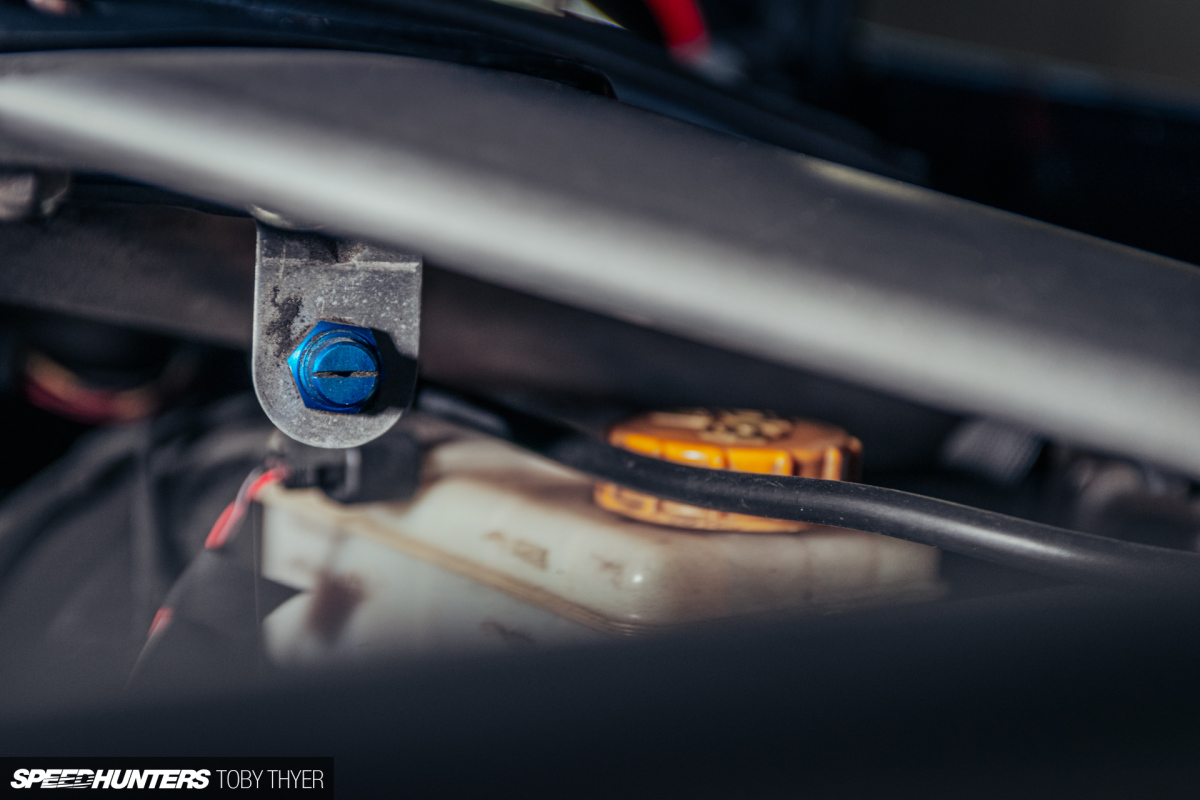
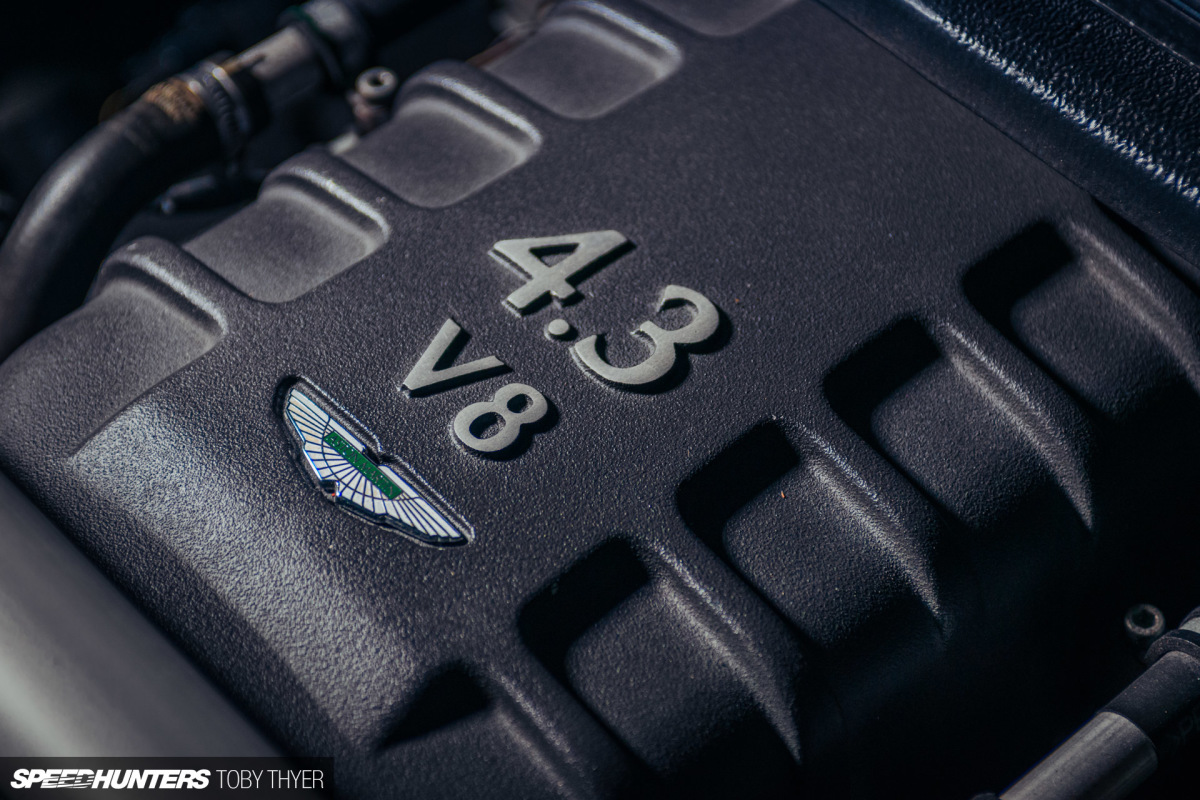
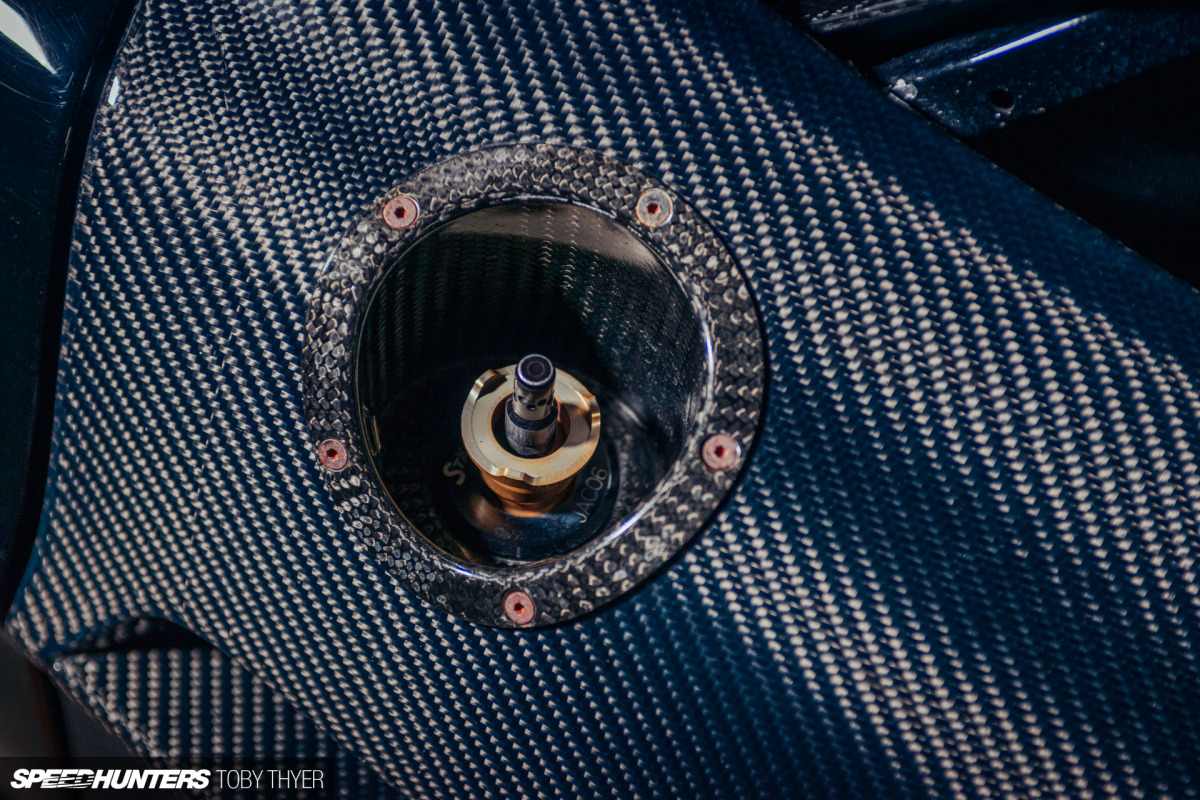
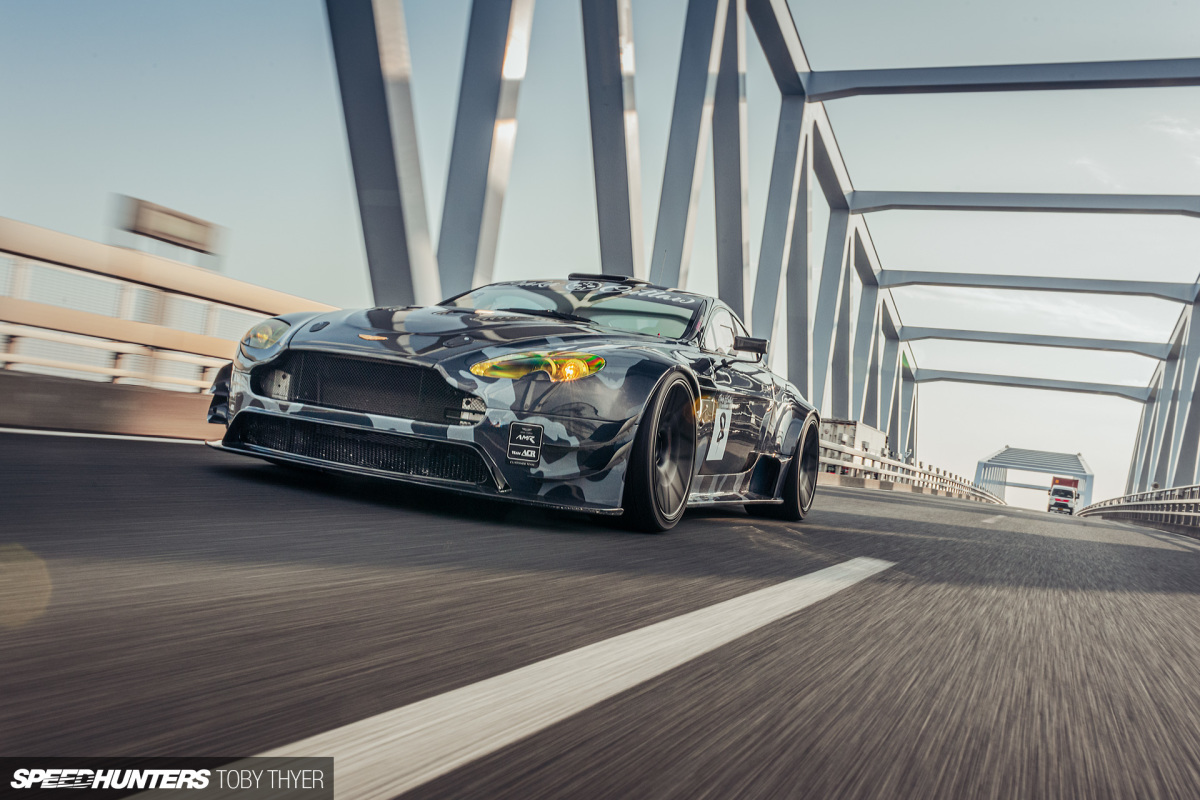

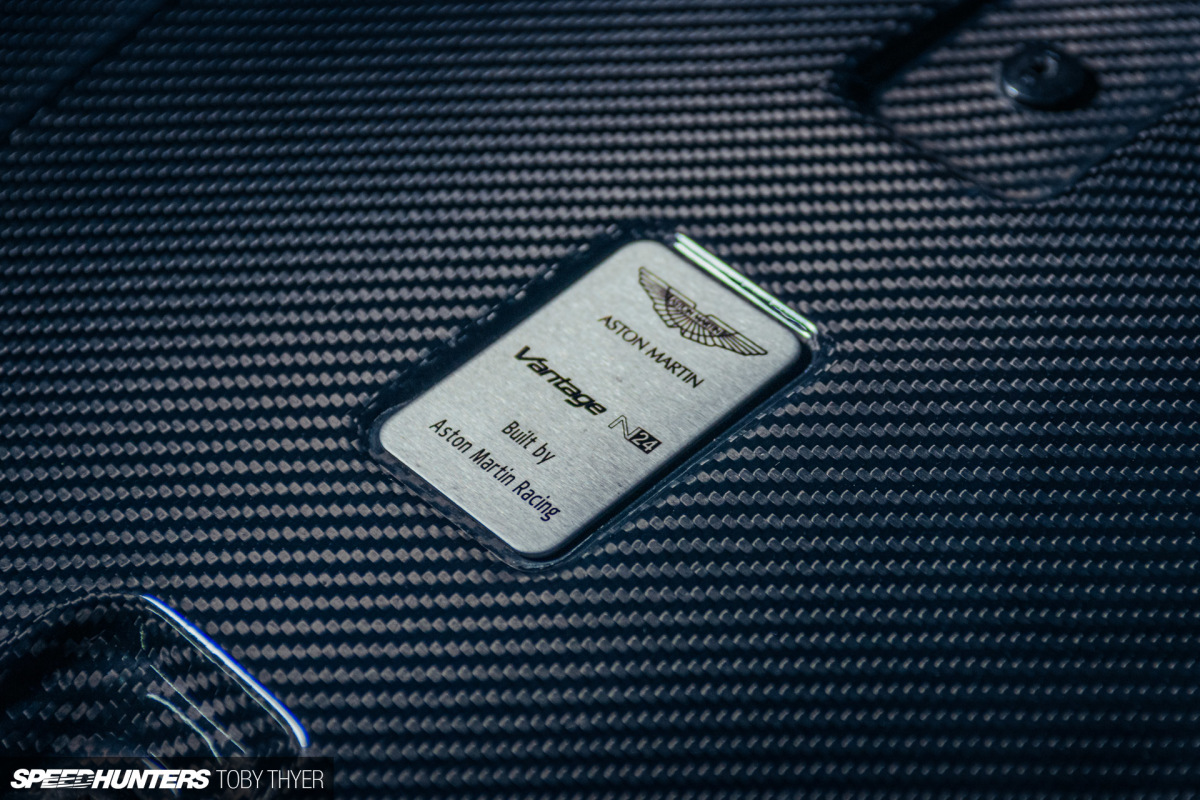
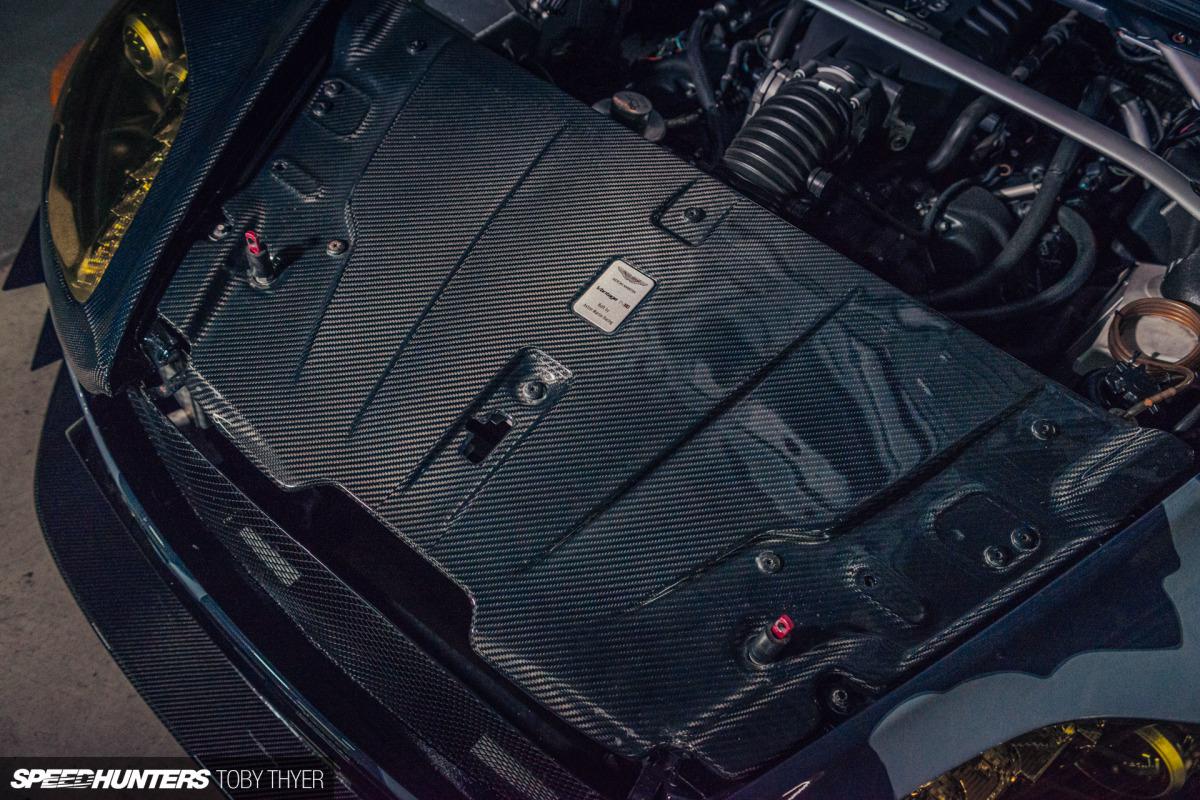









After seeing Darren Kelly's Aston Martin at Formula D and being swept away by it and now seeing this dope ass modified Vantage done by Akane-san just really shows how there are people willing to push boundaries and do things no one else has never done before
We definitely need more unorthodox builds like this here on Speedhunters!
Awesome! Super fat!
Sir Stirling Moss the 1959 LeMans Aston driver? NOPE. That would be good ol’ American boy Carroll Shelby, along with Brit Roy Salvadori.
You can check the history of Sir Stirling Moss here http://www2.astonmartin.com/en/racing/history
He raced for Aston as well at LM in 59. But correct, did not win it for Aston
How can we hear what kinds of sounds it makes??
Check our instagram reels for the POV wild ride in this car! IG: osakaoutlaw
Judging by the welds on the cage, it is very clearly a steel cage not aluminum. Also appears to be bolted to the aluminum tub since you cannot weld a steel cage to it
funniest part of this is that it STILL hasn't been corrected in the article.
You are correct, apologies for my oversight
Amazing photos and feature Toby. Proud of ACR Aston Martin and Hiro for paving the way for such a bold direction for Aston enthusiasts. Team ACR and Osaka Outlaw all the way!!
What a poor attempt at journalism. Full of useless theatric commentary, and almost no detail on the car. No mention of suspension or brakes, engine management, tyres. Clearly written from a most basic briefing sheet. This is how to take an interesting car and write the most boring story. As a journo why don’t you get a clue about track cars? You miss the entire point.